IV COCKTAIL INFUSIONS
Business at various hydration businesses in Mohawk Valley is growing as more people turn to IV fluids to improve their health. Should you try it? Story on page 10

INSIDE
4 THINGS YOU NEED TO KNOW ABOUT BLOOD THINNERS
ALL ABOUT DENTAL IMPLANTS
Brian Jackson, a dentist based in Utica, is a national as well as an international speaker on dental implants and has been published in numerous peer reviewed journals on the topic of oral implantology. P. 4
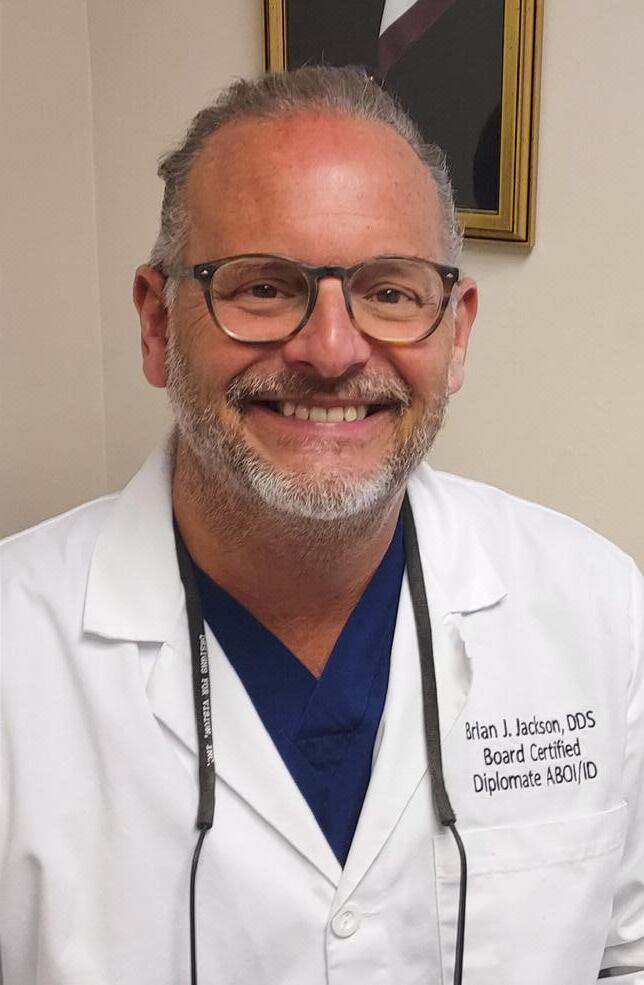
CARPEL TUNNEL SYNDROME: WOMEN MUCH MORE AT RISK
Wear Your Way to Better Health
Wearable health technology is one way that people are beginning to take their health and wellness into their own hands—or eventually their ears and feet and every other part of the body imaginable. P.20
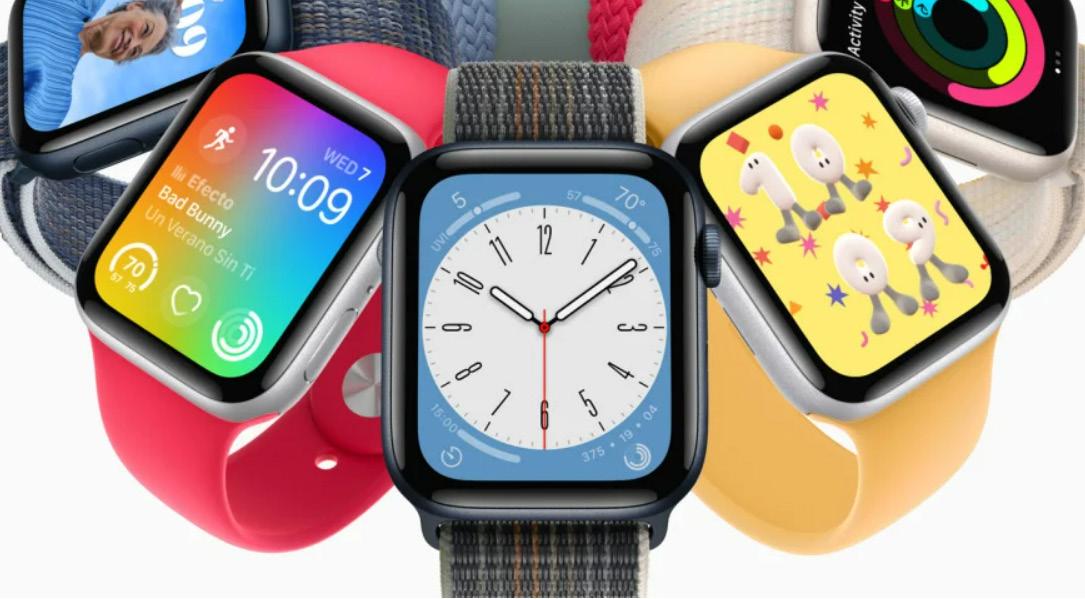
M VHEALT HNEWS.COM MARCH 2023 • ISSUE 205 FREE COPY
Cutting Calories May Slow Aging in Healthy Adults
The key to living longer could be eating less.
In a new study published in the journal Nature Aging, researchers found that a calorie-restricted diet had substantial health benefits, including delayed aging.
“The main take-home of our study is that it is possible to slow the pace of biological aging and that it may be possible to achieve that slowing through modification of lifestyle and behavior,” said senior study author, physician Dan Belsky, an assistant professor of epidemiology at Columbia University's Mailman School of Public Health in New York City.
The phase 2 clinical trial included 220 adults who either made a 25% calorie cut to their diet or no changes at all. The body mass index (BMI) for participants ranged from 22 to 27 (a BMI of 30 is the threshold for obesity).

In the first month, those in the calorie-restricted group were given three prepared meals each day so they would be familiar with portion sizes. They were counseled about their diet for the first 24 weeks of the two-year study.
The other group had no counseling or restrictions.
Despite the plan to cut about 500 calories in a 2,000-calorie daily diet, most cut only half that, said physician Evan Hadley, director of the geriatrics and clinical gerontology division at the National Institute of Aging (NIA), which funded the study.

“But that 12% was enough to have significant changes,” Hadley told NBC News.
Researchers used an algorithm based on past data for 1,000 people who were followed for 20 years, to see how certain DNA biomarkers changed in the study group.
The algorithm was like a “speedometer,” Belsky explained, to help gauge the pace at which participants aged.

Those who cut their calories slowed their aging by 2% to 3%, reducing the likelihood of dying early by 10% to 15%.
"We all have the power to change the trajectories of aging," Belsky contends.
Researchers plan to follow those on the calorie-restricted diet for 10 years.
It's not clear why eating less would slow aging, though it may prompt cellular changes, Belsky said.
"It may induce sort of mecha-
nisms of survival responses in the body that have the effect of cleaning up intracellular garbage," Belsky explained. “It's a signal to the body, saying, 'Hey, pay attention. There are resource stresses in the environment. We need to make sure that we are using all of the resources available to us most efficiently.'”
Still, long-term limits on calories have been shown in animals to be harmful, including reduced muscle strength, slower metabolism and an impaired immune system, Valter Longo, director of the Longevity Institute at the University of Southern California, told NBC News. Longo
was not involved in this study.
“It may cause powerful anti-aging effects, but also probably some degree of frailty or other issues that may not be so beneficial,” Longo said.
People should not starve themselves, Pankaj Kapahi, a researcher at the Buck Institute for Research on Aging, told NBC News. He was not involved in the study.
Kapahi noted that exercise and balanced eating are important for aging.
"Calorie restriction has to be done at a marginal level," he said.
Page 2 • IN GOOD HEALTH – Mohawk Valley’s Healthcare Newspaper • February 2023
Bring Your Passion to Crouse… Today! UP TO $45,000 EXPERIENCED RN SIGN-ON BONUS • RELOCATION • LOAN PAYBACK UP TO $25,000 NEW GRAD RN PIncreased ay Rates!Effective June
Sharon Kanfoush Wellness, LLC
Hundreds of U.S. Doctors Lost Their Lives During Pandemic
Many of America's doctors who were heroes on the front lines of the pandemic paid the ultimate price for their efforts, a new analysis shows.
An estimated 622 extra deaths occurred among U.S. doctors aged 45 and over from the pandemic's onset in March 2020 through December 2021, researchers say.


Older doctors who provided direct care to patients battling COVID-19 were at especially high risk.

These excess deaths to physicians didn't subside until April 2021, soon after the introduction of COVID-19 vaccines, concluded a team led by Mathew Kiang, an epidemiologist at Stanford University's School of Medicine in California.
The findings were published Feb. 6 in the journal JAMA Internal Medicine.
The only good news coming out of the new study: Despite the tragic loss of so many doctors' lives, death rates among physicians were still lower than that observed among the general population.
That suggests "personal protective equipment use, vaccine requirements, infection prevention protocols, adequate staffing and other workplace-based protective measures were effective" in preventing more deaths among doctors, the authors wrote.
They conducted the study by comparing pre-pandemic data on deaths to older (aged 45 and above) physicians from 2016 through Febru-
ary 2020 to data collected during the pandemic itself.
Almost 800,000 physicians were included in the analysis. The team excluded younger physicians from their analysis because deaths among that group were very low (fewer than five deaths per month).
Deaths to U.S. doctors peaked in December 2020, the study found, with 70 excess fatalities occurring that month. Deaths began to decline through 2021.
Among the 622 excess deaths recorded during the pandemic, certain factors seemed to raise the risk that a doctor might die, the study found. Men made up about two-thirds (65.3%) of those who passed away, and the odds that a doctor might die during the pandemic rose with his or her age, the report found.
Older doctors who cared for COVID-19 patients appeared to be at especially high risk, suggesting that hospital "workplace policies should prioritize mitigating risks in this group" in the future, Kiang and colleagues wrote.
Of course, the deaths of working physicians may have exacerbated a wider tragedy: more deaths to patients as hospitals faced staffing shortages caused (at least in part) by the loss of these valuable crew members.
That's why "preventing excess deaths among physicians is an important component of mitigating excess deaths in the general population," the study authors concluded.
SERVING ONEIDA, HERKIMER, & MADISON COUNTIES
per year), call 315-749-7070.
Editor & Publisher: Wagner Dotto • Associate Editor: Stefan Yablonski
Contributing Writers: Barbara Pierce, Deb Dittner, Gwenn Voelckers, David Podos, Deborah Jeanne Sergeant, Anne Palumbo, Daniel Baldwin.
Advertising: Amy Gagliano: 315-402-3370 • Email: amyIGHmv@gmail.com
Layout & Design: Angel Campos-Toro • Office Manager: Loni Zardus
Make the decision to FEEL BETTER: Body, Mind & Spirit!
Sharon
Make
50%Off1stSessionwith Code:TRYITOUT!
RESILIENCE MIND
RESILIENCE MIND - BODY

One-on-One, Small Group & Corporate:
• Yoga Therapy, Meditation & Mindfulness
• Somatic Movement & Pain Self-Management
• Personal Training & Wellness Coaching
•
• Chair Yoga & Chair Fitness
• Rehabilitative Qigong
In-person or virtual!
Sharon Kanfoush, PhD, C-IAYT, CEI3, ERYT500, ISSA-CPT 2709 Genesee Street, Utica NY 13501 (315) 982-7144

ERYT500, ISSA-CPT 2709 Genesee Street, Utica NY 13501 (315) 982-7144
sharonkanfoushwellness@gmail.com
sharonkanfoushwellness@gmail.com sharonkanfoushwellness.org skanfou.gumroad.com
sharonkanfoushwellness.org
skanfou.gumroad.com
sharonkanfoushwellness.org
skanfou.gumroad.com
LEADING HEART
FREE Consultation!
February 2023 • IN GOOD HEALTH – Mohawk Valley’s Healthcare Newspaper • Page 3 No material may be reproduced in whole or in part from this publication without the express written permission of the publisher. The information in this publication is intended to complement — not to take the place of — the recommendations of your health provider.
In Good Health is published 12 times a year by Local News, Inc. © 2023 by Local News, Inc. All rights reserved. 4 Riverside Drive, Suite 251, Utica, NY 13502 Phone: 315-749-7070 • Email: IGHmohawkvalley@gmail.com A monthly newspaper published by Local News, Inc. 20,000 copies distributed. To
home delivery ($21
request
CARE FOR HEALTHY RURAL COMMUNITIES Bassett.org A MORE EXCELLENT WAY Columbia University Vagelos College of Physicians & Surgeons, New York, NY Bassett Medical Center, Cooperstown, NY | Cobleskill Regional Hospital, Cobleskill, NY | A.O. Fox Hospital, Oneonta, NY | Little Falls Hospital, Little Falls, NY | O’Connor Hospital, Delhi, NY | Valley Health Services/Valley Residential Services, Herkimer, NY Bassett Healthcare Network is proud of its cherished 90-year partnership with Columbia University, and now we’re
honored to welcome cardiovascular specialists from Columbia to our heart care team. Together, we are embracing the latest in digital medicine to be at the forefront of rural healthcare.
Kanfoush Wellness, LLC
the
to FEEL BETTER: Body, Mind & Spirit!
Small Group & Corporate: • Yoga Therapy, Meditation & Mindfulness
Somatic Movement & Pain Self-Management
Personal Training & Wellness Coaching
Chair Yoga & Chair Fitness
Rehabilitative Qigong
Kanfoush, PhD, C-IAYT, CEI3,
decision
One-on-One,
•
•
•
•
Sharon
- BODY 50%Off1stSessionwith Code:TRYITOUT! FREE Consultation! In-person or virtual!
Kanfoush Wellness, LLC
the decision to FEEL BETTER: Body, Mind & Spirit!
Small Group & Corporate:
Sharon
Make
One-on-One,
Therapy,
& Mindfulness
• Yoga
Meditation
Somatic
Pain
Movement &
Self-Management
Training
Coaching
• Personal
& Wellness
• Chair Yoga & Chair Fitness
Qigong
• Rehabilitative
2709
Sharon Kanfoush, PhD, C-IAYT, CEI3, ERYT500, ISSA-CPT
Genesee Street, Utica NY 13501 (315) 982-7144 sharonkanfoushwellness@gmail.com
RESILIENCE MIND - BODY 50%Off1stSessionwith Code:TRYITOUT! FREE Consultation! In-person or virtual!
Mark Cuban Pharmacy Could Save Billions on Prostate Cancer, Bladder Drugs
A new drug company founded by entrepreneur Mark Cuban could save patients $1.29 billion a year based on 2020 Medicare Part D expenditures on just the nine most popular urological drugs, according to a study published in the Journal of Urology.
The study, led by Vanderbilt University Medical Center (VUMC) researchers, examined the potential savings if Medicare prices for generic drugs were as low as those offered under the Mark Cuban Cost Plus Drug Company, which provides a standard template pricing of the cost of manufacturing the drug plus a 15% markup, plus standard $5 fees for dispensing and $3 fees for shipping.
“We found that if the U.S. government used Mark Cuban’s cost-plus drug pricing model to supply urological drugs to Medicare patients, they would save taxpayers an estimated $1.29 billion,” said lead author physician Ruchika Talwar, a fellow in urologic oncology at VUMC.

“It means that patients would be able to get their drugs more affordably, but also means that taxpayer funds could go toward other important issues and hopefully save us all some money in general.”
The nine commonly-prescribed urological drugs that were studied — tamsulosin, finasteride, oxybutynin, alfuzosin, solifenacin, tolterodine, sildenafil, tadalafil, and abiraterone — are used to treat conditions including prostate cancer, overactive bladder and prostate enlargement.
For the 90-day prescription prices, all drugs generated cost savings for Medicare, ranging from 48.7% to 99.2%. The savings for abiraterone alone amounted to $656 million, or nearly 52% of all potential Medicare savings for urological drugs in both 30-day and 90-day prescription models. Abiraterone is used to treat prostate cancer that has spread to other parts of the body by blocking testosterone, which is the hormone that drives prostate cancer growth.
“Just by changing the way one commonly prescribed drug (abiraterone) was purchased, we could convey a benefit of more than $650 million in cost savings to taxpayers,” Talwar said. “The impact of this could be astronomical across all cancers … any sort of oral, generic drug available through Mark Cuban’s company can be a lot cheaper for many patients, not just Medicare patients, through this program. And taxpayers are the ones who fund Medicare drug spending.”
Meet Your Doctor
By David Podos
Brian Jackson, DDS
Utica dentist specializes in dental implants and has spoken nationally and internationally about the subject
Brian Jackson is a native of Utica. His practice is located at 2534 Genesee St., Utica.
He has been practicing dental medicine for more than 30 years providing a wide range of services.

Jackson is a national as well as an international speaker on dental implants and has been published in numerous peer reviewed journals on the topic of oral implantology. His educational background is extensive.
“I began my education at Utica College where I completed my undergraduate work then after my four years at Utica College I went to dental school at the University of Buffalo School of Dental Medicine where I spent four years obtaining my DDS. When I left Buffalo I did a one-year practice residency program at Saint Luke’s Hospital here in Utica,” he said. “When I entered into practice and after a few years, I knew I was interested in surgery but did not want to give up the reconstructive or aesthetic part of dentistry. As a result, I was admitted and spent studied as a part-time student at New York University furthering my dental medical education in their implant dental program. That education I received kind of foreshadowed my professional career which is where I am today, where most of my focus is in implant dentistry.”
Implants are an artificial tooth that is anchored in the gums or jawbone to replace a missing tooth or
teeth. They’re made of titanium and other materials that are compatible with the human body. They’re surgically placed in the upper or lower jaw or both, replacing a single tooth up to replacing a full set of teeth.
Along with Jackson’s extensive education and experience he holds a number of unique credentials. He is board certified in implant dentistry. Currently there are only a thousand dentists having this credential. He is also a fellow of the American Academy of Implant Dentistry.
“Good dental health has to start when you’re young. There is no reason today that anyone should need a dental implant. But, of course, that happens for many people for any number of reasons from poor dental care, [gum disease] also known as periodontal disease, to damaging your teeth for instance from an accident,” he said. “Young people should be able to preserve their teeth for a lifetime. So, what are you going to do? Well, basic dental care hasn’t really changed all that much in the last 20 or 30 years. You want to brush your teeth two to three times a day. You would like to floss your teeth as well. The whole concept behind brushing and flossing your teeth is to reduce the bacterium that sits on your teeth. We naturally have bacteria and we want to remove it. Of course, a good mouth wash is also very effective in reducing bacteria combined with flossing and brush-
ing. All of these things are great at reducing bacteria which along with plaque can cause tooth decay, as well as gingivitis [gum disease].”
To further reduce the risk of oral disease the American Dental Association endorses the use of drinking fluorinated community water as a safe and effective way to prevent tooth decay. Additionally, the CDC also supports the drinking of fluorinated water. Their statistics and research point out that after 75 years of Americans drinking fluorinated water it helps keep teeth strong and reduces cavities by about 25% in both children as well as in adults.
Jackson is also an advocate for drinking water that has been fluorinated.
“Most city water has added fluorine. If you don’t live in a community that has this, then use an oral rinse such as ACT which has fluorine in it. Another disease that is often overlooked is oral cancer which is a killer. The best way to avoid oral cancer is to not smoke cigarettes; this also includes chewing tobacco and to not drink heavy amounts of alcohol,” he said.
The Oral Cancer Foundation states close to 54,000 Americans will be diagnosed with oral cancer this year. Of the 54,000 it is estimated that close to 10,000 will die.
“Diet also plays a key role in dental health as well as in overall health. We know that simple sugars are not good for you. For instance, if you were to drink soda it’s not good because of the sugar content and even if it is diet soda that’s not good for dental health as well because soda is very acidic and it can be aggressive at destroying your teeth,” he said. “Best to avoid eating and or drinking anything that has high amounts of simple sugars. Sugars that are good are from fruits and or vegetables. Of course, having a treat now and then like ice cream or a candy bar is alright as long as you can rinse your mouth and brush your teeth as soon as possible after consumption to avoid those sugars attaching to the teeth which attracts bacteria.”
Lifelines
Name: Brian J. Jackson
Position: Dentist at Slavin. Jackson. Burns Comprehensive Dentistry, Utica Hometown: Utica
Education:Bachelor’s degree from Utica College, cum laude; Doctor of Dental Surgery degree at SUNY/Buffalo, School of Dental Medicine; post-graduate training at St.Luke’s Memorial Hospital Center’s general practice residency program. Completed \oral implantology training at New York University, School of Dentistry.
Distinction: In 1999 was awarded the 5th District Dental Society young Dentist Excellence Award encompassing dentists in eight counties including Utica and Syracuse. Currently serves on the New York State Peer Review Committee, and is past president of the Northeast District of the AAID, as well as, past president of the OneidaHerkimer County Dental Society.
Current: Member of board of trustee for the American Academy of Implant Dentistry and treasurer of the American Academy of Implant Dentistry Foundation. Also a member of the editorial board of the Journal of Oral Implantology.
Page 4 • IN GOOD HEALTH – Mohawk Valley’s Healthcare Newspaper • February 2023




2023
Nearly 1 in 5 American Adults Takes Sleep Meds
Nearly 20% of American adults use a drug to help them sleep, either occasionally or regularly, health officials recently reported. Sleep medications, sold both over-the-counter and by prescription, are a common treatment for sleep problems, said senior report author Lindsey Black, a health statistician at the U.S. Centers for Disease Control and Prevention's National Center for Health Statistics (NCHS).
"Our report details patterns of use of medication to inform patterns of use among subgroups of the U.S. population," Black said. "We do hope
by dissemination of this report it can lay the groundwork for more work in this area and our understanding of sleep health among adults."
Using data from the 2020 National Health Interview Survey, Black and colleagues found that among adults ages 18 and older, 8.4% used medication to help them fall or stay asleep on most nights or every night. Another 10% said they used medication on some nights.
Women were more likely than men to take medication for sleep and the percentage doing it generally increased with increasing age.
Specifically, 10% of women used sleep medication, compared with 6.6% of men. White adults were more likely to use sleep medications, and Asian adults were least likely to do so. Also, the percentage of men who used medication for sleep dropped as family income increased, Black's team found.
The findings were published Jan. 25 as an NCHS Data Brief.
One expert wasn't at all surprised by the number of Americans who rely on sleep medications.
"I work in a sleep center. And you know, I certainly see a lot of sleep medication use," said Lauren Broch, a clinical sleep psychologist at the Northwell Health Sleep Disorders Center in Great Neck.

Broch thinks not only are sleep medications (both prescription and over-the-counter) overused but also
poorly used.
Prescription drugs like temazepam (Restoril), triazolam (Halcion), zaleplon (Sonata), eszopiclone (Lunesta) and zolpidem (Ambien, Edluar, ZolpiMist) were designed to be used in the short term, not as a long-term crutch.
The same is true for over-thecounter sleep aids, many of which contain the antihistamine diphenhydramine, the active ingredient in Benadryl.
People who use these medications habitually come to rely on them, Broch said.
"Many people start believing that the sleep medication is what is making them sleep," she said. "There's a dependence on them, and sometimes tolerance, and they believe that they must use it or they won't sleep. That's never a good thing."
HealthcareinaMinute
By George W. Chapman
The Pandemic Is Over!
Well, not really. The administration has declared an end to the public health epidemic as of this May. The government is not saying the clinical pandemic is over, although it is on the decline. The declaration officially puts an end to the PHE originally declared by the previous administration in 2020 in response to COVID-19. The PHE has been extended several times since 2020. Among other things, it authorized expanded telehealth services and improved payment for providing services (paid same as in-person visit). The PHE also expanded Medic-
2022 Bad for Hospitals
Last year was the worst year for financially ravaged hospitals since the onslaught of the pandemic.
A study published by industry advisory group Kaufman Hall revealed the average hospital started off the year with operating margins hovering around minus 3.5%. Hospitals gradually dug their way out negative operating margins by December 2022, but about half of the nation’s 7,000 hospitals finished in the red for the year in total. Analysts predict some improvement or relief in 2023 due to better management of staffing issues, improvement in the supply chain, continuing leveraging of outpatient services, increased alliances or ventures with physicians and stronger commercial payer negotiations. Related to the bad year fiscally: 50% of hospital-based physicians and nurses reported job-related distress and 25% reported depression.
Private Equity in Rural Hospitals
Desperate for capital, rural hospitals are easy pickings for aggressive profit- at- all- costs private equity
aid eligibility to cover more of the indigent. So, the end of the PHE in May will at least create confusion, if not chaos. States will be forced to reconsider and reconfigure Medicaid eligibility. Physicians and hospitals may lose improved payment for telehealth services. (As of this writing, Medicare is extending behavioral telehealth for seniors through 2024.) While PHE declarations only impact Medicare and Medicaid, commercial insurers typically follow suit. Late night TV comedians have tongue in cheek made light of “government declares pandemic over!” Funny, but not.
(PE) companies. They approach financially vulnerable hospitals with management and consulting contracts with no investment or assuming any risk. PE firms own or manage about 130 rural hospitals mostly in southern states like Texas, Kentucky and North Carolina. The purely forprofit firms typically strip out many needed services, close beds, slash staffing and all but eliminate charity care. They quickly turn around the profit and loss statement, grab their fees and get out. This has put additional pressure on surrounding urban and suburban facilities that end up providing the care discontinued at the rural hospital. Medicare, state Medicaid agencies and provider organizations are investigating the negative impact of PE on their rural providers.
Long COVID-19 Decreasing
good news is the number of individuals suffering with long COVID-19 declined from 19% in June of last year to 11% this year. In addition, 17% of those who had long COVID-19 no longer have symptoms. The Kaiser Family Foundation report was based on analyzing CDC
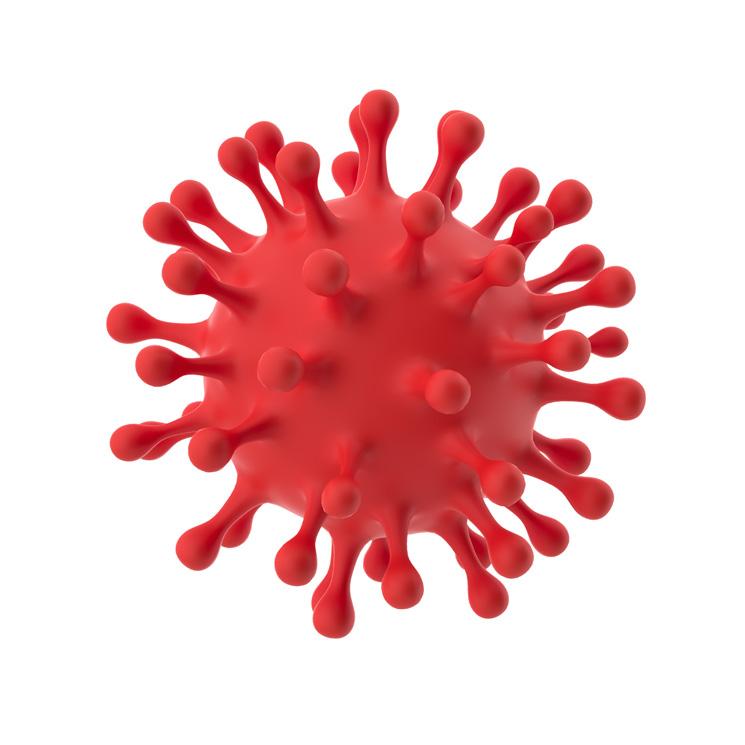
data. The issue, however, remains a serious concern. The bad news is the best practices to treat long COVID-19 have yet to be finalized. There is no singular test to definitively determine if long COVID-19 is caused by covid alone. Post COVID-19 conditions are NOT due to just one illness. Your health history plays an important factor. It is estimated that 500,000 to 4 million individuals in the workforce have long COVID-19.
Behavioral Health Crisis Among Our Young


Behavioral healthcare has long been besieged by the opioid epidemic (suicides, addiction, depression). Then COVID-19 struck three years ago, further highlighting the shortcomings of our behavioral health system.
COVID-19 (along with social media) has had the most negative impact on our young. A survey of parents, conducted The Pew Research Center, revealed they now rank their children’s mental health status as a primary concern (anxiety, depression, suicide). The study also revealed what many employers are experiencing: the mental health of children directly impacts the well-being and productivity of their parents. All agree that government and commercial insurers must expand the access to, quality of, and affordability of behavioral health. Regulatory barriers must be removed, including anachronistic–redundant state licensing requirements that make it unnecessarily complicated for professionals to provide telehealth services across state lines. The nonprofit National Alliance of Healthcare Purchasers Coalition, which represents 12,000 employers and purchasers covering more than 45 million employees, is dedicated to promoting effective programs and strategies to improve our behavioral healthcare system for all and especially for the young.
CVS–Aetna Expand Mental Health
This alliance and similar commercial ventures and alliances, continue to distance themselves from traditional hospital and provider-based delivery systems by pio-
neering innovative, consume-friendly delivery systems. CVS–Aetna has been offering basic virtual and in person primary care services since May of 2022. Effective spring 2023, CVS–Aetna will be expanding telehealth behavioral health services to Aetna members, including appointments with licensed therapists and psychiatrists (MDs). Currently, the average appointment for a virtual, in person or at home primary care visit is out 24 days. The average appointment for an in person behavioral health service, before telehealth is introduced, is out 48 days. Time will tell how popular and effective these corporate healthcare delivery systems are.
US Healthcare Again Fares Poorly
The recent report from the Commonwealth Fund once again illustrates how poorly we are doing when compared to 37 other wealthy countries. Here are some of the low points. As of 2020, our average life expectancy was 77. The average life expectancy among our 37 counterparts was three years more at 80. We have the highest rate per 100,000 of avoidable deaths, infant and maternal deaths and gun related deaths. The latter being 7.4–100,000 versus 2.7–100,000 average in the other 37 countries. We spend, by far, more than any of our counterparts. The US spends close to 18% of its GDP on healthcare. That’s just over TWICE the average of the other 37 countries. The closest to our 18% of GDP were Germany at 13% and France at 12%. The major difference? Most of the 37 countries that clearly outperformed us in just about every category have single-payer healthcare systems.
Page 6 • IN GOOD HEALTH – Mohawk Valley’s Healthcare Newspaper • February 2023
George W. Chapman is a healthcare business consultant who works exclusively with physicians, hospitals and healthcare organizations. He operates GW Chapman Consulting based in Syracuse. Email him at gwc@gwchapmanconsulting.com. -
Massachusetts Bill Would Let Prisoners Donate Organs in Exchange for Shorter Sentence
Massachusetts legislators have proposed a bill that would allow prison inmates to donate their organs or bone marrow as a way to trim the length of their sentence.
Q & Awith Maria Cappoletti
New CEO at Kelberman — a nonprofit that helps people diagnosed with autism — plans to reopen office in Utica
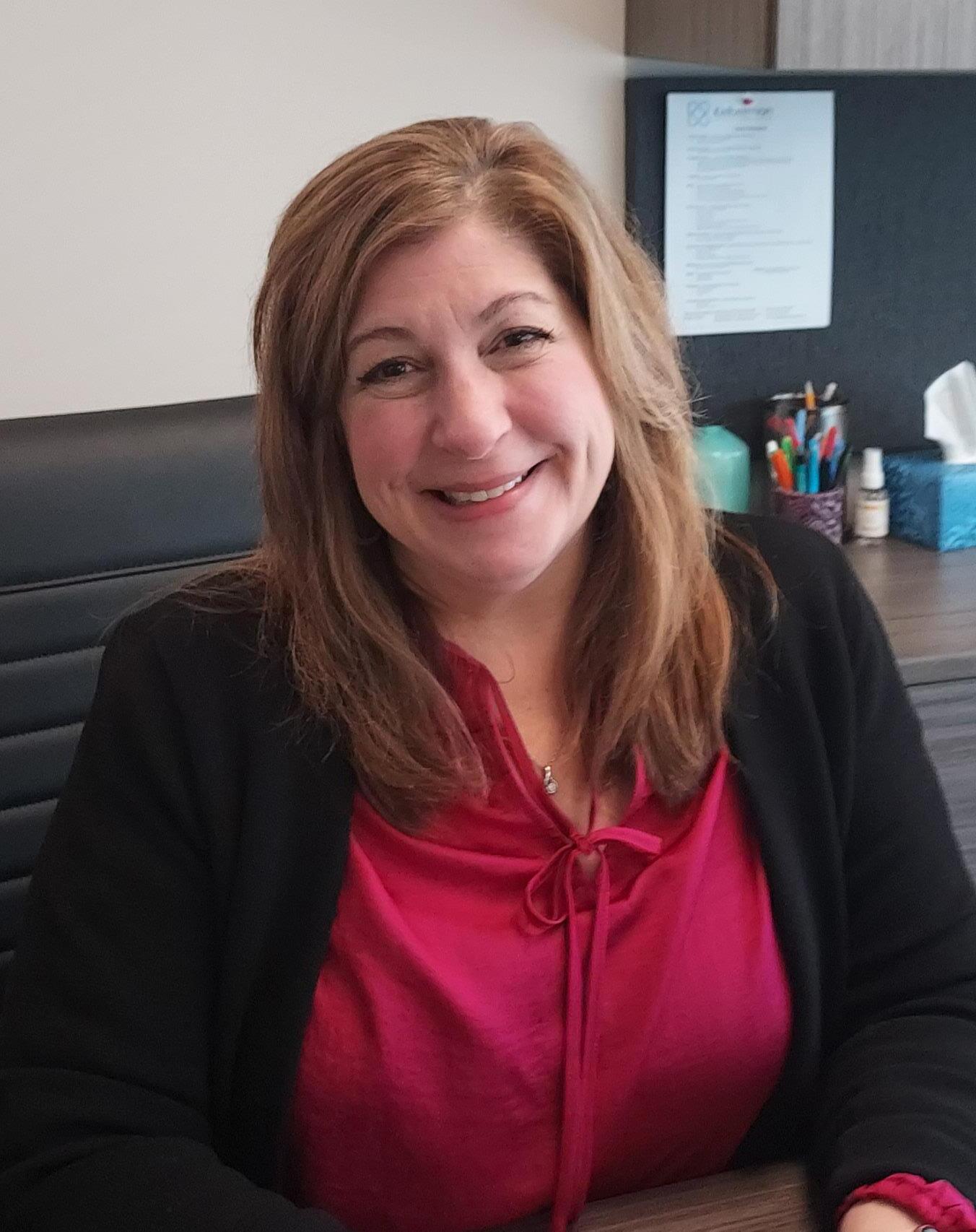 By David Podos
By David Podos
Q: What are the basic services you provide and who are the people receiving those services?
A: Kelberman provides help to individuals who have been diagnosed with autism as well as support for their families if needed. Additionally, we offer housing to our clients through our Link program. Our staff offers a wide scope of services to our clients from birth up to and through adulthood. More specifically, we offer evaluation and diagnostic testing and social work services. We also work within the school system offering support for students with autism. Presently we have a clinic in Rome as well as a clinic in the Syracuse area.
Q: So, you do not have a clinic here in Utica?
A: We did have a clinic here. But now we are in transition looking for a new location so we can once again have clinical services right here in Utica. In the meantime, we are temporarily in Rome until we re-open back here in Utica.
Q: What is your best estimate when that will happen?
A: We have some exciting plans
underway and are hoping we can re-locate and be operational within the next year.
Q: You mentioned earlier that you can also provide housing, if needed. What are the criteria to be eligible, how many apartments do you have?
A: We have 60 units in total. Twelve of the 60 are specifically set aside for people with autism and IDD [intellectual developmental disabilities]. The other 48 units are for people who meet a certain financial threshold, so those people have to be income qualified.
Q: Are the apartment units just for single-occupancy or are there apartments that can accommodate couples or families?
A: We have a variety of apartments that can offer living arrangements from single to couples and families.
Q: What is your educational background and work background?
A: My original degree is in music therapy. So, I started my career as a music therapist working with children with autism, as well as working
in centralized school settings with students who were autistic. I also worked for the Office of OPDD [Office of People with Developmental Disabilities], providing facilitative services and service coordination. Just prior to coming to Kelberman I was involved in quality and programming for a company that did care coordination. When I came to Kelberman last year, I was the chief operating officer and now hold the position of chief executive officer.
Q: As the new CEO what is your vision for Kelberman?
A: Well, I want the agency to continue to be the center of excellence for autism services. I also want to make sure we are meeting the needs of our clients and their families along their lifespan, for however long a period that may be.
Q: What challenges do you expect to face in 2023 as the new CEO?
A: I think one of the challenges that we as an agency [myself as CEO] will face, like so many industries, is finding the right employees. For us at Kelberman, that is such a driving force. The people that we employ are important. We want them to feel that they belong, that they have a home here. Of course, I want to make sure the communities that we serve know who we are, what services we provide, and the importance of building a strong community connection.
Q: How many staff do you currently have?
A: About 350.
Q: What is your operational budget for 2023?
A: $14.5 million.
Q: What are your funding sources?
A: We have a varied approach on where we get our funding. Many of our services are Medicaid funded; we also accept private insurance reimbursement, state and federal grants as well as fundraising, which is always a challenge.
Q: Fundraising is certainly a challenge and with today’s economy even more so. Do you have any large fundraising events coming up for 2023?
A: Yes, it is our annual autism walk, which will be held in April.
For more information on the walk as well as other events and services, visit Kelbermancenter.org or call 315- 797-6241.
While some experts wonder about the ethics of such a law and whether it would even be allowed under federal law, a Democratic sponsor of the bill, state Rep. Judith Garcia, told the Associated Press it could reduce health inequities from “the vicious cycle of unjust incarceration and over-policing of Black and Brown communities.”
While Black and Hispanic people tend to have a higher need for organ donation because of certain health conditions, discriminatory incarceration rates limit matches and lead to long waitlists for Black people, Garcia explained.
Not all experts agree with the tenets of the bill and it faces an uphill battle to passage, however.
“The bill reads like something from a dystopian novel,” Kevin Ring, president of Families Against Mandatory Minimums, a Washington, D.C.based criminal justice reform advocacy group, told the AP. “Promoting organ donation is good. Reducing excessive prison terms is also good. Tying the two together is perverse.”
Federal law bans selling human organs. George Annas, director of the Center for Health Law, Ethics & Human Rights at Boston University’s School of Public Health, told the AP that reducing a prison sentence in exchange for organ donation is the equivalent of a payment.
“You can’t buy an organ. That should end the discussion,” Annas said. “It’s compensation for services. We don’t exploit prisoners enough?”
On the other side, bill co-sponsor Democratic state Rep. Carlos Gonzalez, said the program was voluntary and that he would be open to an organ donation program that wasn’t paired with sentence reduction.
“It’s not quid pro quo. We are open to setting policy without incentives,” Gonzalez said, adding that it is “crucial to respect prisoners’ human dignity and agency by respecting their choice to donate bone marrow or an organ.”
Under the proposal, the program would allow inmates to receive sentence reductions of 60 days to one year after donating organs or bone marrow. A committee would decide how much would need to be donated for a sentence reduction.
February 2023 • IN GOOD HEALTH – Mohawk Valley’s Healthcare Newspaper • Page 7
‘I think one of the challenges that we as an agency [myself as CEO] will face, like so many industries, is finding the right employees. For us at Kelberman, that is such a driving force. The people that we employ are important. We want them to feel that they belong, that they have a home here.’
Live Alone & Thrive
stumbling, and collapsing under the maple tree in my back yard.
By Gwenn Voelckers
Practical tips, advice and hope for those who live alone

tips, who alone
The Power of Faith: One Woman’s Spiritual Journey
Life after a divorce or the death of a spouse can leave you reeling and wondering about practically everything — your judgment, your future, your fears, and your faith.
Below is an interview I conducted with one of the most thoughtful and inspiring women I've met through my “Alone and Content” workshops.
Caroline (not her real name) was divorced when I met her and has since remarried, “happily,” she added with a smile.
Her faith lifted her up and carried her through the hardest times following her separation. It is my hope that her journey will inspire yours.
• Would you care to share a little bit about your faith?
I’m a Christian... I've looked at other religions and have made a conscious decision to remain a Christian, even though I don’t understand it all. I am learning to embrace the mystery.
• What role did your personal faith play in your adjustment to living alone?
My Christian beliefs hold to the tenet that I am never alone — that Christ is with me wherever I am. I’ve prayed a lot and have found indescribable peace in that praying.
• What was the biggest challenge you faced living alone and how did your faith help you heal?
Grieving the end of my marriage caused me the most pain while
alone. All the 'if onlys' and 'why me?' really tore at my heart. The Bible was my constant companion. I was also inspired by “The Purpose Driven Life,” by Rick Warren, and other Christian books and radio programs, which helped me put things into perspective.
Talking with others in my congregation was also a huge part of my healing. I get emotional when I think about the support and caring that surrounded me, rescued me.
• Is there a particular experience you had that captures the power of your faith?
My youngest son was 7 at the time. After dinner he brought me his homework book to sign, as was his teacher’s daily requirement. He’d been at his dad’s house the previous three days and I saw his dad’s girlfriend’s signature on the parent line in the book. My heart stopped.
Then, something in me snapped — all the times my precious children were away from me ... all the awfulness ... all the anger and injustice and fear. I sucked it up and forced my shaking hand to sign my name next to hers. I made my way outside,
For Baby's Sake, Momsto-Be Need the Whooping Cough Vaccine: CDC
Pregnant women can help protect their newborns from whooping cough by getting a Tdap vaccine during the third trimester of pregnancy.

The U.S. Centers for Disease Control and Prevention tracked cases of infant whooping cough between Jan. 1, 2000, and Dec. 31, 2019.
The researchers found a link between reduced rates of whooping cough in newborns under 2 months of age and Tdap (tetanus, diphtheria, pertussis) vaccination during pregnancy.
Whooping cough, or pertussis, is highly contagious and can be serious
for infants who are too young to be vaccinated. The CDC recommends babies get their first Tdap shot at 2 months of age.
“Getting Tdap during pregnancy offers infants the best protection before they are old enough to receive their whooping cough vaccines,” physician José Romero, director of CDC's National Center for Immunization and Respiratory Diseases, said in a CDC news release. “This protection is critical because those first few months are when infants are most likely to have serious complications, be hospitalized or die if they get whooping cough.”
I laid on my back clutching my chest, my heart. No tears. Just intense pain. I did not, could not, make a sound or move. But after a while, my mind prayed a lament, begging God for relief from this excruciating pain.
In that instant, a 'peace that passes all understanding' moved over me and I felt my golden retriever appear and quietly curl up next to my body.
• Did you ever lose faith or struggle to regain your faith?
I did not lose my faith but, boy, did I ever have a few words with God! One morning during breakfast with my two boys, I ran to the garage and grabbed my bike after learning of the girlfriend’s ongoing involvement my boys’ lives.
I needed to get out of the house so the boys wouldn’t hear my rant at their father. I tore down the road, enraged and screaming at God, 'How could you let this happen?!'
About a half mile from home, I saw a doe quietly standing by the side of the road. I calmed down immediately and just sobbed. I turned the bike around just as the sun burst over the horizon, washing the sky, the quiet country road, and me in the warm morning light. I was reminded again 'You are never alone.'
• What advice would you give to those whose suffering has challenged their faith?
Remember a time when you risked it, trusted God, and felt a measure of serenity after you did. Remember that, 'This, too, shall pass.' Remember that there are things we can only learn when in solitude. That God has a bigger plan than our plan.
• What role does prayer play in your life?
Prayer is the great wireless communication connection to God. God speaks to us in three ways, through the Bible; through people, which in-
cludes books people write and teachers like you; and through prayer, which may encompass comforting things embodied in nature, dogs, deer, sunrises, and so much more.
• How can those who live alone activate their faith more fully?
It’s like exercise and eating right. You get out of it what you put into it. You prepare yourself for the years ahead by continuing to move and by putting good things into your body.
You prepare your heart and soul for the times ahead by studying your faith of choice and by nourishing your mind and actions with uplifting words and passages, helpful deeds, gratitude, and inspirational music and images.
• Was there a favorite scripture passage that lifted you up during your challenging times that you'd like to share with my readers?
"Do not be anxious about anything, but in everything by prayer and supplication, with thanksgiving, let your requests be made known to God. And the peace of God, which surpasses all understanding, will guard your hearts and your minds in Christ Jesus." — Philippians 4:6-7
I hope you have found this interview helpful and supportive. While I find my spiritual bearings in nature, meditation, love and a humanist philosophy, I am inspired by the words and wisdom expressed by Caroline. We can all be strengthened by a spiritual life, wherever that path leads us. Embrace it.
Gwenn Voelckers is the founder and facilitator of Alone and Content, empowerment workshops for women and author of “Alone and Content,” a collection of inspiring essays for those who live alone. For information about her workshops, to purchase her book, or invite her to speak, visit www. aloneandcontent.com
The researchers had not looked at U.S. population level trends in infant whooping cough cases since this maternal vaccination strategy began in 2011. The CDC recommends all women get Tdap vaccines between their 27th and 36th week of each pregnancy.
Newborn whooping cough rates decreased significantly since vaccination of pregnant women began, according to the CDC. Maternal Tdap vaccination prevents more than three-quarters of cases of whooping cough in infants under 2 months of age.
Tdap vaccination during pregnancy dropped off during the COVID-19 pandemic, and the CDC and its partners are working to in-
crease rates.
The CDC said that all people in close contact with infants should be up to date with their whooping cough vaccines.
“Everyone who is pregnant should feel confident in knowing that the Tdap vaccine is safe and effective,” said Dr. Linda Eckert, the American College of Obstetricians and Gynecologists' liaison to CDC's Advisory Committee on Immunization Practices. “Knowing that Tdap vaccination during pregnancy protects 9 in 10 babies from being hospitalized with whooping cough, I strongly recommend this vaccine to all my pregnant patients for their peace of mind and for their family's health and well-being.”
Page 8 • IN GOOD HEALTH – Mohawk Valley’s Healthcare Newspaper • February 2023
Things You Need to Know About Blood Thinners
By Barbara Pierce
“People have been on this medication for 10 years and no one has had problems with it,” said my cardiologist as she handed me a prescription for Coumadin, a blood thinner.

Though I was young, I’d had a stroke. The blood thinner would prevent another stroke.
Nearly 30 years later, I’m still taking it. Now it’s the genetic Warfarin. I’ve led a full, active life, never had serious problems, though I know a few people who did. And one who refused to take it, and died because she had a stroke.
I was apprehensive about taking it, as are most people. But I’ve learned it’s not a big deal, not at all. It does take regular monitoring, to make sure my blood clots are within the desired range, not too slow or too fast.
We asked physician Mario Wassel of Mohawk Valley Health System in Barneveld to respond to concerns you may have about taking a blood thinner, if it’s been prescribed for you.

1.Why is a blood thinner prescribed?
Blood thinners, also called anticoagulation medications, are prescribed to treat and prevent blood clots, said Wassel, who is family medicine doctor. Patients are placed on anticoagulation therapy if they’re at increased risk of developing a blood clot. If a blood clot should reach the heart, the lungs or the brain, it could cause a heart attack,
a clot in the lungs (referred to as a pulmonary embolism) or a stroke.
Some of the conditions that increase the risk of developing a blood clot include an irregular heartbeat, such as atrial fibrillation; a history of heart surgery, such as a valve replacement; or other surgery, such as a hip or knee replacement; or a congenital heart defect. Also, certain types of cancers or other disease that increase the risk of blood clots forming, or for being at higher risk of stroke or heart attack for any reason, Wassel said.
2.What are the most important things a person should know when they first begin taking it?
People should be aware of the potential increased risk of bleeding while taking anticoagulation, said Wassel. Since blood thinners slow the clotting of blood, unwanted bleeding can occur; this is the most common side effect.
Report any unusual bruising or bleeding you experience to your healthcare provider right away. Also,
Nearly 1 in 5 American Adults Takes Sleep Meds
Nearly 20% of American adults use a drug to help them sleep, either occasionally or regularly, health officials recently reported.
Sleep medications, sold both over-the-counter and by prescription, are a common treatment for sleep problems, said senior report author Lindsey Black, a health statistician at the U.S. Centers for Disease Control and Prevention’s National Center for Health Statistics (NCHS).
“Our report details patterns of use of medication to inform patterns of use among subgroups of the U.S. population,” Black said. “We do hope by dissemination of this report it can lay the groundwork for more work in this area and our understanding of sleep health among adults.”
Using data from the 2020 National Health Interview Survey, Black and colleagues found that among adults ages 18 and older, 8.4% used medication to help them fall or stay asleep on most nights or every night.
Another 10% said they used medication on some nights.
Women were more likely than men to take medication for sleep and the percentage doing it generally increased with increasing age.
Specifically, 10% of women used sleep medication, compared with 6.6% of men. White adults were more likely to use sleep medications, and Asian adults were least likely to do so. Also, the percentage of men who used medication for sleep dropped as family income increased, Black’s team found.
The findings were published Jan. 25 as an NCHS Data Brief.
One expert wasn’t at all surprised by the number of Americans who rely on sleep medications.

“I work in a sleep center. And you know, I certainly see a lot of sleep medication use,” said Lauren Broch, a clinical sleep psychologist at the Northwell Health Sleep Disorders Center in Great Neck.
let them know if you have a serious fall or serious head injury.
Wassel also cautions that we should be aware of interactions with other medications which may make the risk of bleeding higher or the clotting higher. Some medications, including over the counter and herbal supplements, can interact with the blood thinner. This may reduce the effectiveness of blood thinners and causing clotting or may increase the effect of the blood thinners and cause more bleeding. It’s important to discuss all your medications, including over the counter, with your health care provider.
Also, it’s best to let your dentist know you’re taking a blood thinner.
Another consideration is that the foods you eat can affect how well your blood thinner will work. High amounts of vitamin K work against Warfarin. Other blood thinners are not affected by vitamin K. Ask your health care professional if your diet can affect your blood thinner.
(Vitamin K is found in green leafy vegetables; I was advised to keep my intake of foods with Vitamin K pretty much the same every day. For example, if I’m going to eat a lettuce salad, eat it most days.)
Always take your blood thinner as directed. For example, some blood thinners need to be taken at the same time of day, every day. Never skip a dose and never take a double dose.
The older blood thinners do require regular blood tests to make sure your dose is high enough to work, but not so high that it puts you at risk of a bleed. An INR range will be set for you (International Normalized Ratio).
I do in home testing through a finger stick, which is most convenient. The technician adjusts my dose if needed.
The new anticoagulants do not require monitoring.
3.Can you ever stop taking a blood thinner?
This depends on the reason it’s been prescribed for you, replied Wassel. For example, if it’s been given after surgery, you may just need it for a short time. Longer duration maybe indicated for patients who develop a blood clot in the legs or lungs without an underlying condition. Some may need to use anticoagulation therapy for lifetime due to underlying condition as mentioned above (example: cardiac arrhythmias) or certain types of cancers or autoimmune disorders.
4.Are there any consequences of taking it long-term?
These medications are generally safe and well tolerated, said Wassel. They’re effective at treating and preventing clots. In the long-term patients should be aware of the potential increased risk of bleeding, and should contact their health care provider if they develop any type of abnormal bleeding.
Broch thinks not only are sleep medications (both prescription and over-the-counter) overused but also poorly used.
Prescription drugs like temazepam (Restoril), triazolam (Halcion), zaleplon (Sonata), eszopiclone (Lunesta) and zolpidem (Ambien, Edluar, ZolpiMist) were designed to be used in the short term, not as a long-term crutch.
The same is true for over-thecounter sleep aids, many of which
contain the antihistamine diphenhydramine, the active ingredient in Benadryl.
People who use these medications habitually come to rely on them, Broch said.
“Many people start believing that the sleep medication is what is making them sleep,” she said. “There’s a dependence on them, and sometimes tolerance, and they believe that they must use it or they won’t sleep. That’s never a good thing.”
February 2023 • IN GOOD HEALTH – Mohawk Valley’s Healthcare Newspaper • Page 9
4
Mario Wassel
IV Cocktails Infusions
What are they? What health benefits do they have? Where can you get them?
By Daniel Baldwin
When I first saw the words IV cocktail infusion, I first thought that it was some sort of alcoholic beverage.
Not quite.
These IV cocktails are made up of vitamins and nutrients. They are IV fluids that come in bags that are injected into a person’s vein, through an IV tube. The vitamins and nutrients are delivered straight into the person’s bloodstream.
The person trying IV cocktail infusion gets all the vitamins and nutrients in the bag. It is more than what they usually get eating fruits, vegetables, vitamins and other supplements.
“An IV cocktail infusion is concentrated delivery of essential vitamins, minerals and nutrients that are delivered directly into the bloodstream,” said Barb Drake, owner of New Hartford Wellness at The Orchard Plaza in New Hartford. “When people take vitamins and minerals by

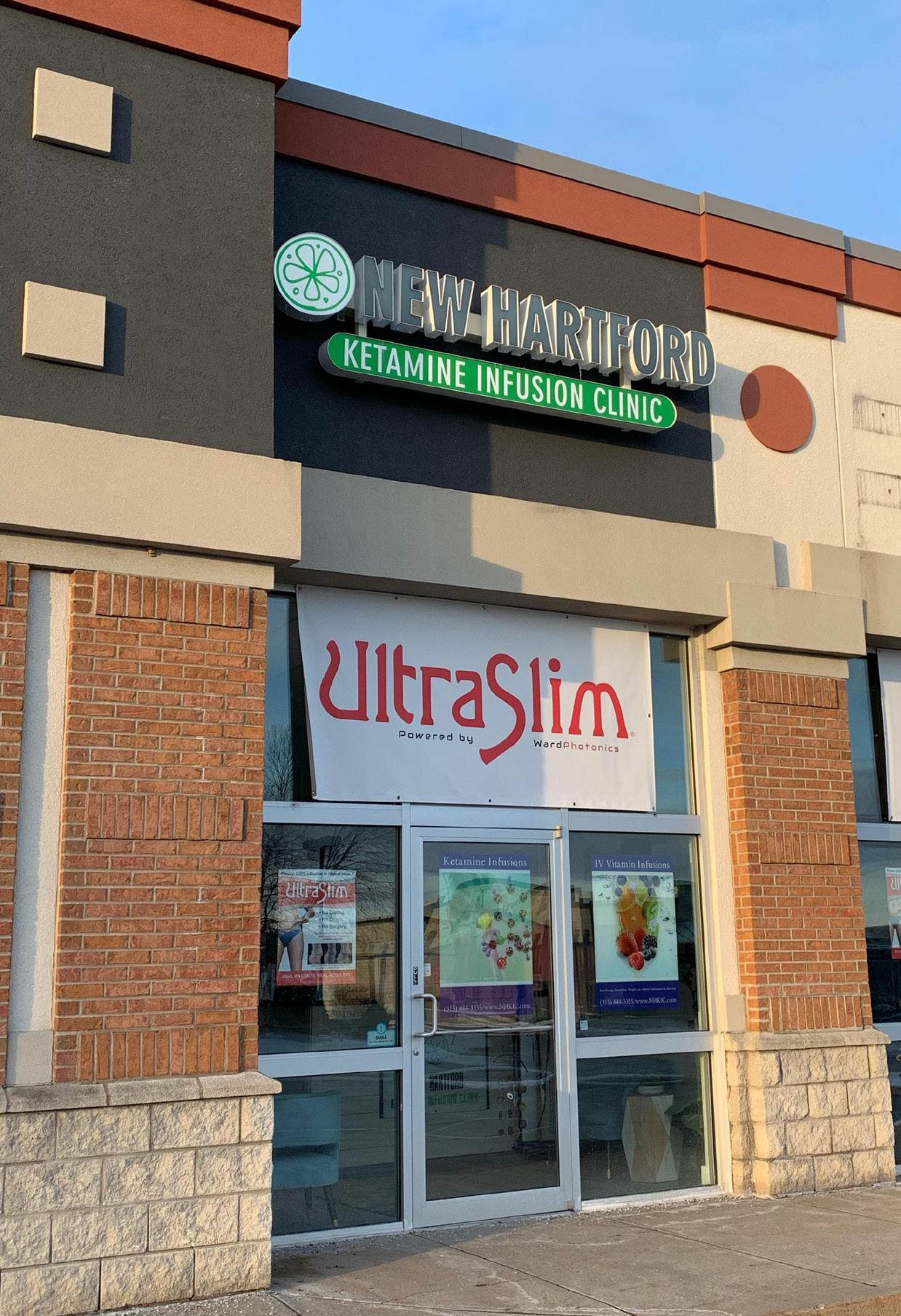
mouth, your body will only absorb and use about 20% of that dose. The rest of it passes right thzrough you. So, with giving it through an IV [cocktail infusion], you get 100% of the dose.”
People who get IV infusion say they feel more energized and rejuvenated after the infusion.
“With all the things that go around in the wintertime, and COVID-19 still lingering out there, we get a lot of patients who are long-haulers with COVID-19 symptoms,” said Drake, who holds a degree of doctor of nursing practice (DNP). “You get over the acute illness and are negative, but still have ongoing symptoms, fatigue, cough or low energy. They feel like ‘OK this is now the new me. I just don’t feel good anymore.’ Then they come in here and we give them doses of the (IV) immune boost, and they feel 100% better.”
People, who have joint, back, or
nerve pain, tend to feel less of that after the infusion.
“People with back pain, neck pain, arthritis disorder, Lyme disease and nerve pain, we have vitamin infusions to help reduce that ongoing pain,” Drake said.
Drake has a variety of IV cocktail blends/infusions at her New Hartford clinic. She has the IV blends that get rid of long-lasting flu symptoms and improve peoples’ immune system. She has the blends that reduce body pain. She has blends that rehydrate people and get rid of their nausea. Drake also has athlete-based IV cocktail blends, which improves a player’s on-field performance and repairs their tissue.
“Each blend is geared towards a specific health condition or a health and wellness goal people have,” Drake said.
She has done this IV infusion work for two years, since the opening of her clinic. After working in critical
care and cardiac surgery for more than 25 years, she decided to leave her daily job at the hospital and open her own clinic. IV cocktail infusions/ therapies have soared in popularity, according to Synergywellnessmedispa.com, but there are hardly any places in the Mohawk Valley to get this sort of infusion, according to Drake. Local residents have to drive long distances to get this type of treatment. The deficit, of IV therapies in MV, was the reason why Drake opened her own clinic and done these sorts of infusions.
“If you go to bigger cities, there’s a lot of choices for patients for holistic medicine, functional medicine and for these types of IV therapies, but like anything in medicine, it takes a lot of time for things to filter down,” she said. “From the university towns and the big cities into the smaller communities. There was really a deficit in this area.”
Now residents do not have to
Page 10 • IN GOOD HEALTH – Mohawk Valley’s Healthcare Newspaper • February 2023
Barb Drake is the owner of New Hartford Wellness in New Hartford. “People with back pain, neck pain, arthritis disorder, Lyme disease and nerve pain, we have vitamin infusions to help reduce that ongoing pain,” she says. Drake holds a degree of doctor of nursin.g practice.
drive far, for this sort of treatment, as they could get their infusions at New Hartford Wellness. They can also get them at Renovatio Aesthetics and Wellness on Genesee Street in Utica.
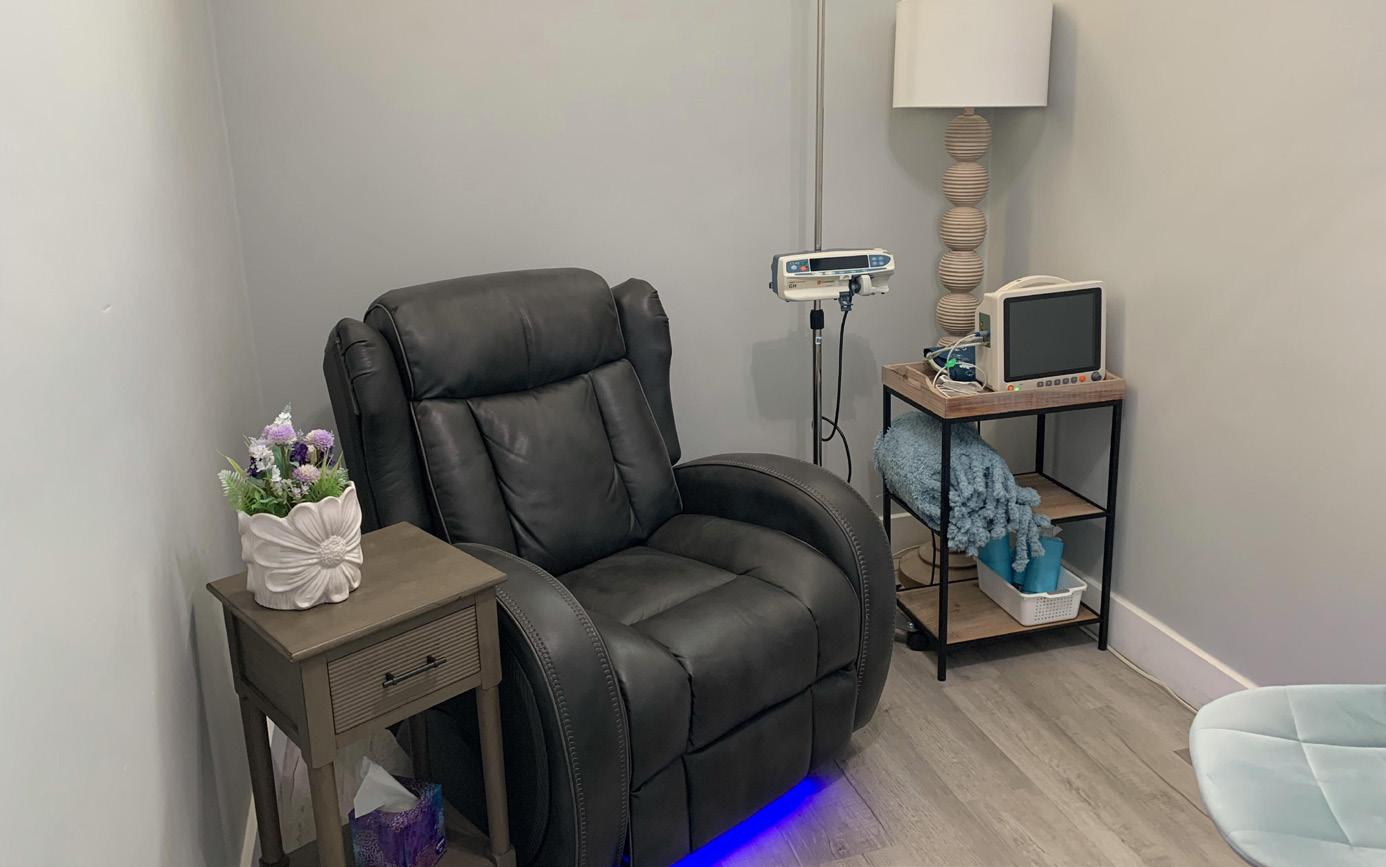
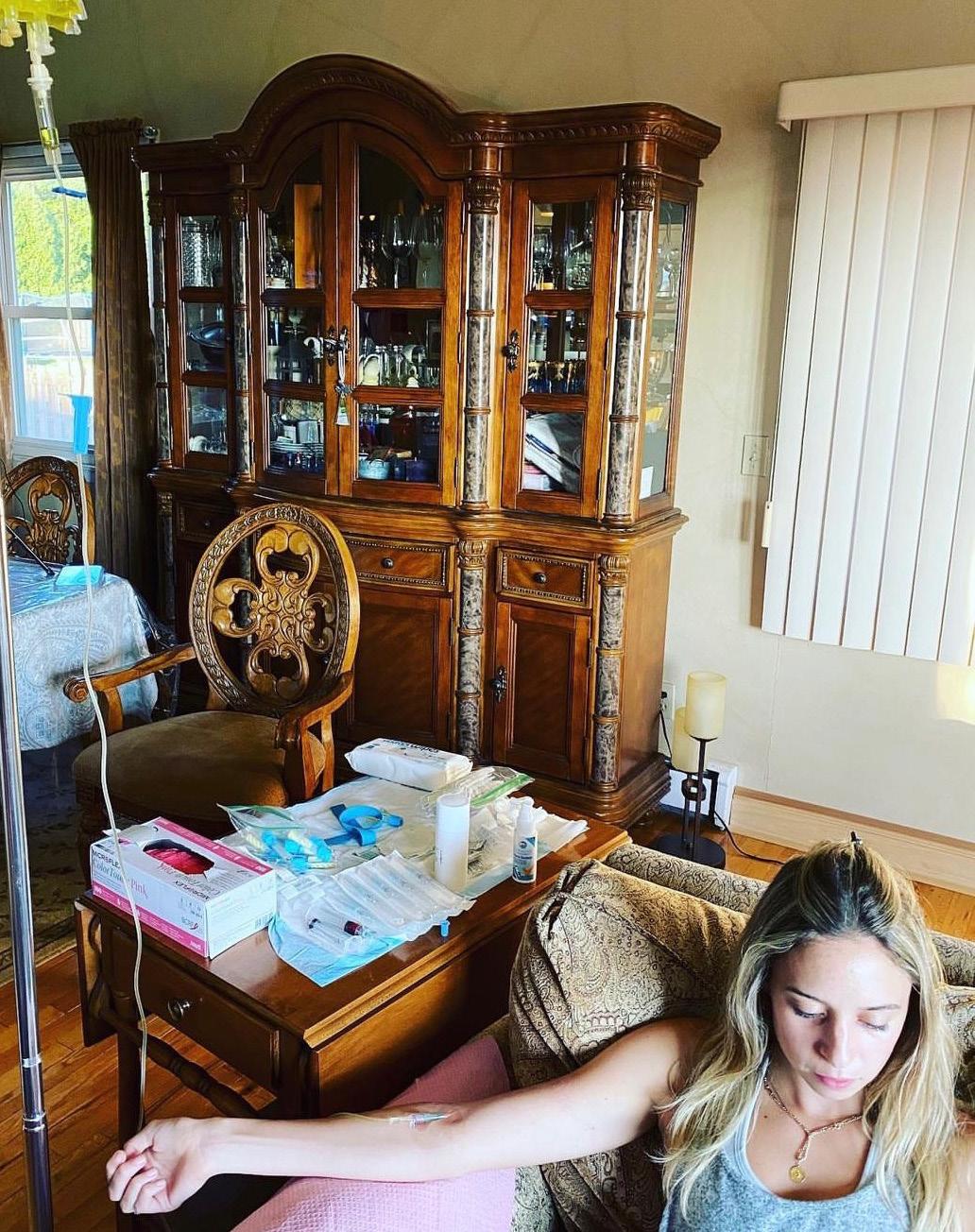
Renovatio is Utica’s premier medical spa that opened during the pandemic in 2020.
It offers a variety of aesthetic treatments, ketamine treatments and IV cocktail infusions to their patients.
Andrea Zumpano, aesthetic nurse practitioner for Renovatio, knows the health benefits behind these IV infusions. The benefits alone are the reasons why she does them.

“I’ve been a nurse for 10 years,” Zumpano said, “and I see the benefits of IV therapy. A lot of people, especially around here, get seasonal allergies, depression and migraine. These cocktails can help treat them in so many different ways, rehydrating them, treating their illness and making them feel better overall. So,
that’s why I started this.”
Drake and Zumpano both use needles, for this infusion, but the needles are small and painless. The whole procedure is painless.
“We have to put an IV catheterin the arm,” Drake said. “We use pretty small catheters; less pain when putting those in. Most people really like coming here. It’s a comfortable experience.”
The patients agree.
“It was a painless process and took about 30 minutes to complete,” Camden resident April Clark, 53, said. “The infusion was enjoyable and Andrea [from Renovatio] explained the procedure and answered all of my questions about the components of the IV solution. Andrea would check on me throughout the infusion to make sure that I was feeling OK.”
Clark said she felt fatigued before her first IV cocktail infusion. She
needed more energy. Clark worked with Andrea at St Luke’s Hospital. The two met at work and set up an appointment at Renovatio. Clark said she felt more energized and less tired after her first infusion.
“What influenced me to start getting the IV cocktail infusion was when Andrea brought pamphlets to work at the hospital and I was reading one of them,” Clark said. “I was initially interested in the IV cocktail infusion. I decided to start the infusion because I felt I needed something extra for my health. I wasn’t nervous, but I was hoping that it would help me with my energy levels. Within a couple of hours afterwards, my energy level was increased. I would normally go to bed early because I was so tired. The first night (after the infusion), I had so much energy that I couldn’t sleep. I stayed up late.”
Glenfield resident Karen Gaesser,
55, also tried the IV cocktail therapy. “I have chronic pain from back surgery,” Gaesser said. “I was relieved that I found something else (IV Infusion) because I tried everything to help with the chronic pain. I read a post on Facebook from a friend of mine. She posted about Barb and her clinic (New Hartford Wellness). I did my research and was like ‘alright I’m trying this.’ I was going there every week because it was working so well and it was giving me my life back. My normal pain was like a four to six every day, and it dropped down to a two. The people around me are looking at me going ‘what’s gotten into you?’ It’s the Myer’s cocktail.”
Myer’s cocktail was named after physician John Myers, who was the first person to develop and introduce this IV cocktail infusion, according to Empowerpharmacy.com.
February 2023 • IN GOOD HEALTH – Mohawk Valley’s Healthcare Newspaper • Page 11
Andrea Zumpano, aesthetic nurse practitioner for Renovatio Wellness Group in Utica (right), assists a patient during an IV cocktail infusion session. Bottom photos: A woman getting an infusion at home.
Why Can’t They Just Stop? How Addiction Hijacks the Brain
By Barbara Pierce
Addiction is a complex brain disease, which is why those who suffer from addiction can’t just stop.
When asked to define addiction, Maureen Petrie, executive director of Catholic Charities of Herkimer County, said, “I like the National Institute on Drug Abuse’s definition of addiction: ‘Addiction is a chronic disease, characterized by drug seeking, and use that is compulsive, or difficult to control, despite harmful consequences.’”
Catholic Charities of Herkimer County is the lead organization in Herkimer County for alcoholism and substance abuse, offering many programs that assist in prevention and recovery.
Addiction is defined as a disease by most medical associations, including the American Medical Association and the American Society of Addiction Medicine.
Like diabetes, cancer and heart disease, addiction is caused by a combination of behavioral, psychological, environmental and biological factors. Genetic risk factors account for about half of the likelihood that an individual will develop addiction.
Some addictions can be in the form of substances such as drugs or alcohol. Other addictions can be in the form of a behavior, such as shopping, gambling, watching pornography, video gaming or eating.
Addiction changes the functioning of the brain.
That’s a critically important consideration: the substance, or behavior of choice, has the ability to hijack — and even destroy —key brain regions.
Researchers have found that much of addiction’s power lies in its ability to take charge of the brain. The desired substance or behavior becomes the primary objective of the addict’s life. It interferes with their ability to resist intense urges to take the drug or the drink or pick up the dice.
“A common misperception is that addiction is a choice or moral problem and all you have to do is stop. But nothing could be further from the truth,” said George Koob, director
stance or behavior even after years of abstinence.
Here’s how Mayoclinic.org describes addiction: “Addiction is an inability to stop using a substance or engaging in a behavior, despite negative consequences. Why is this? The reward center in the brain releases dopamine in response to a pleasurable experience. The more times people experience the behavior, the more dopamine is released and the more driven they are to return to the behavior.”
Abuse online. “When the frontal cortex isn’t working properly, people can’t make the decision to stop taking the drug — even if they realize the price of taking that drug may be extremely high and they might lose custody of their children or end up in jail. Nonetheless, they take it.”
Teens are especially vulnerable to possible addiction because their brains are not yet fully developed — particularly the frontal regions that help with impulse control and assessing risk. Pleasure circuits in adolescent brains also operate in overdrive, making drug and alcohol use even more rewarding and enticing.
Prevention is critical to reducing the harms of addiction.
To treat addiction, scientists have identified several medications and behavioral therapies — especially when used in combination — that can help people stop using specific substances and prevent relapse.
Helping people break the grip of addiction is complex and requires multiple strategies.

of the National Institute on Alcohol Abuse and Alcoholism online. “The brain actually changes with addiction and it takes a good deal of work to get it back to normal. The more drugs or alcohol you’ve taken, the more disruptive it is to the brain.”
The biological basis of addiction helps to explain why people need much more than good intentions or willpower to break their addiction.
These brain changes can be persistent, which is why addiction is considered a “relapsing” disease — people in recovery are at increased risk for returning to using the sub-
With continued use, brain structure and function are altered and the addict depends on the drug not simply to feel good, but to feel normal. For these individuals, using drugs or alcohol is no longer a choice.
When addicted, the drug user will do just about anything to obtain the drug. The drug becomes the most important part of the person’s life, overshadowing any other aspect.
“Brain imaging studies of people addicted to drugs or alcohol show decreased activity in this frontal cortex,” said Nora Volkow, director of NIH’s National Institute on Drug
Quitting takes more than good intentions or a strong will, even for those who want to quit. Drugs and alcohol change the brain in ways that makes quitting hard.
“Treatment depends to a large extent on the severity of addiction and the individual person,” Koob added. “Some people can stop cigarette smoking and alcohol use disorders on their own. More severe cases might require months or even years of treatment and follow-up, with real efforts by the individual and usually complete abstinence from the substance afterward.”
Page 12 • IN GOOD HEALTH – Mohawk Valley’s Healthcare Newspaper • February 2023
“The brain actually changes with addiction and it takes a good deal of work to get it back to normal. The more drugs or alcohol you’ve taken, the more disruptive it is to the brain.”
A New Era in Addiction Treatment


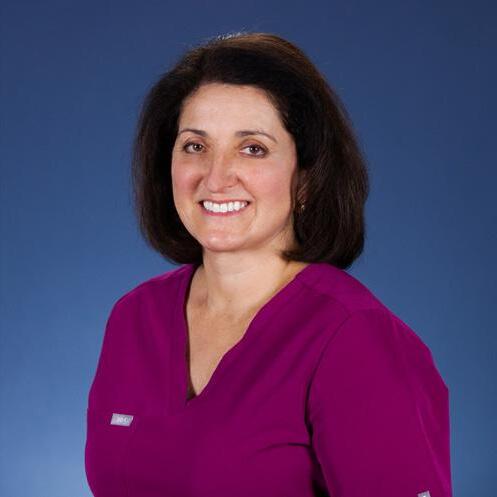
Addiction affects all, regardless of background, race, ethnicity, gender, religion or socio-economic status. In recent years, communities across our nation — including Central New York — have experienced alarming increases in the number of people needing addiction treatment services.
As the longest running treatment program in the region, Crouse Health’s Addiction Treatment Services remains committed to our mission to expand access to care and ensure delivery of high-quality addiction and mental health treatment in our community.
We are proud of our facility that matches the caliber of our staff and provides a nurturing, safe and uplifting environment that is already greatly enhancing our focus on holistic patient care: The Bill & Sandra Pomeroy Treatment Center at Crouse Health.
If you, a loved one, friend or colleague is in need of treatment for substance use disorder, please contact us at 315-470-8304 or visit crouse.org/addiction
Care Program
February 2023 • IN GOOD HEALTH – Mohawk Valley’s Healthcare Newspaper • Page 13 Mary
Breast Surgeon Kristen A.
PA-C Breast Specialist Experienced Breast Surgeon Roswell Park Cancer Network Affiliate Advanced Imaging Technology Oneida Health is excited to welcome Dr. Mary Ellen Greco MD, FACS and Kristen McNeil, PA-C to our new Breast Care Program. Breast
New In Oneida 301 Genesee St, Suite B • Oneida Breast Care NOW ACCEPTING PATIENTS 315-606-2768
Ellen Greco, MD, FACS
McNeil,
Bill & Sandra Pomeroy Treatment Center in Syracuse. The two-story, 42,000 square-foot facility at 2775 Erie Blvd., East, replaces the 100-year-old former location of Crouse’s outpatient treatment services at 410 South Crouse Avenue.
Be a Savvy Health Care Consumer
Managing your health care, or the care of a loved one, can be overwhelming, especially if complex medical conditions are involved, or the list of providers and prescriptions is long. Here are easy ways to keep it all under control.
Get organized
“Create a health care binder with the names and contact information for your health insurer, each provider you see, and the pharmacy and lab you use,” says physician Nicholas Massa, vice president, medical affairs at Excellus BlueCross BlueShield. He recommends a three-ring binder so you can add and remove pages. Pick one that is brightly colored, and label it clearly so it stands out from your
other important documents. Include a calendar and extra pages so you can keep a running log of office visits and topics covered.
If you have a family member or trusted friend who assists with health care paperwork or transportation to appointments, show them your binder and explain your record keeping system. It’s good to have backup.
Get connected
Create a member login for your insurer’s website and download the mobile app if it has one. Establish accounts with each of your providers’ online patient portals. These tools provide easy two-way communication with your care team and allow
Are the Health Risks of Obesity Overrated?
By Barbara Pierce
“I’ve been obese all my life and I don’t have any medical problems!” said a 65-year-old friend. “Fat is not unhealthy!” claim many websites.
Even from the McGill University website, a Canadian Ivy league school: “Obesity is not synonymous with ill health.”
We’ve noticed more and more — online and in newspapers — the health risks of obesity are being downplayed.
Why is this, we wondered? We know health news changes. Health trends change. What’s good for you in one generation carries a severe health risk in another generation. Is this true of being obese?
Perhaps it’s the magnitude of the problem. According to the American
Heart Association, almost one-third of U.S. adults and 17% of U.S. children are overweight.
We used to hear that obesity is an alarmingly global public health issue. Several countries have seen a triple rise of obesity in the last few decades, due to an increasingly sedentary lifestyle and the consumption of more high-calorie processed food.
So is this no longer an alarming issue?
“If so many people are doing it, let’s make it an OK thing,” seems to be the current thinking.
We wondered:
Could the health risks of obesity be overstated? Could the media be right and it’s no longer a big deal?
“No! They’re wrong. There is a direct relationship between obesity
you to receive email and text reminders about appointments, screenings, and even lab results. Store the usernames and passwords in your binder.
“Make sure your providers are connected with each other by consenting to HealtheConnections, Central New York’s secure clinical information exchange,” says Massa. “Ask your provider to supply you with the form.” HealtheConnections supports more than 12,000 physicians and millions of patients across 26 New York state counties in the Central, Northern, Southern Tier, and Hudson Valley regions, and surrounding states. Consenting allows your medical care team to securely share records across connected institutions and practices, making your patient information available wherever and whenever needed for your care.
Get support
Anyone, at any time, could need
someone they trust to get involved in their care.
Add a family member or friend to your caregiver team by signing HIPAA authorization forms allowing your providers to share information with them. “Having that extra set of ears will help ensure that you clearly understand your provider’s instructions,” says Massa. He also recommends patients select a health care agent to make decisions on their behalf if they are unable to speak for themselves. This is done by completing a health care proxy form, available from any health care provider. Keep a copy in your binder and share copies with family members.
“Managing your health care can be so much easier if you follow these simple suggestions,” encourages Massa. “You can do this!”
For more health and wellness information visit ExcellusBCBS.com.
and medical complications,” said Keneth Hall, medical director of the Weight Loss Center at Rome Health, Rome.

“They’re mutually exclusive,” he added. “You can’t have one without the other. There’s a distinct and direct relationship.”
“An obese woman came into my office the other day,” he continued. “She stated: ‘I may be overweight but I’m perfectly healthy!’ No, she’s not perfectly healthy; she just hasn’t developed any medical complications yet.”
“A person can be overweight and not yet have developed medical complications,” he said. “Here’s the way it goes: You become overweight, then you become obese, then you become obese with a full constellation of medical problems.”
Those problems include high blood pressure, diabetes, heart disease, stroke, sleep apnea, fatty liver —often obese people have a combination of these.
Another thing we’ve noticed lately: a lot of ads for weight loss programs say “It’s not your fault that you’re fat.”
Is it the fault of the individual we asked Hall?
“Yes and no,” he replied. “There are three pathways to obesity: genetics, behavior and environment.”
Some people have a higher risk because of their genes; obesity runs in the family. If you have those genes, you could eat exactly the same thing as someone who is not genetically predisposed and you will gain weight faster than the person who is not genetically predisposed, he explained.
“That doesn’t mean you have to accept it; but you do have to work harder to keep the weight off,” he said.
“Behavior means the way an individual contributes to whether he is overweight or not,” he added. “If you’re a couch potato, maybe have a job where you sit all day, and you’re not active, then you’re more likely to be overweight.”
Environmental causes are multifaceted, he said. This refers to your whole family environment. Persons in higher socio-economic status with more education are able to afford to
eat a healthier diet and they teach their children a healthier lifestyle. As compared to lower income, lesser educated families, who may eat a lot of fast food and aren’t physically active, don’t go to the gym.
Also, our community at large contributes to the obesity epidemic, with 10 fast food places on every corner, an easy access to unhealthy food.
If you have a problem keeping your weight within normal limits, you need to be active and get help — see a doctor or see a gastric bypass specialist.
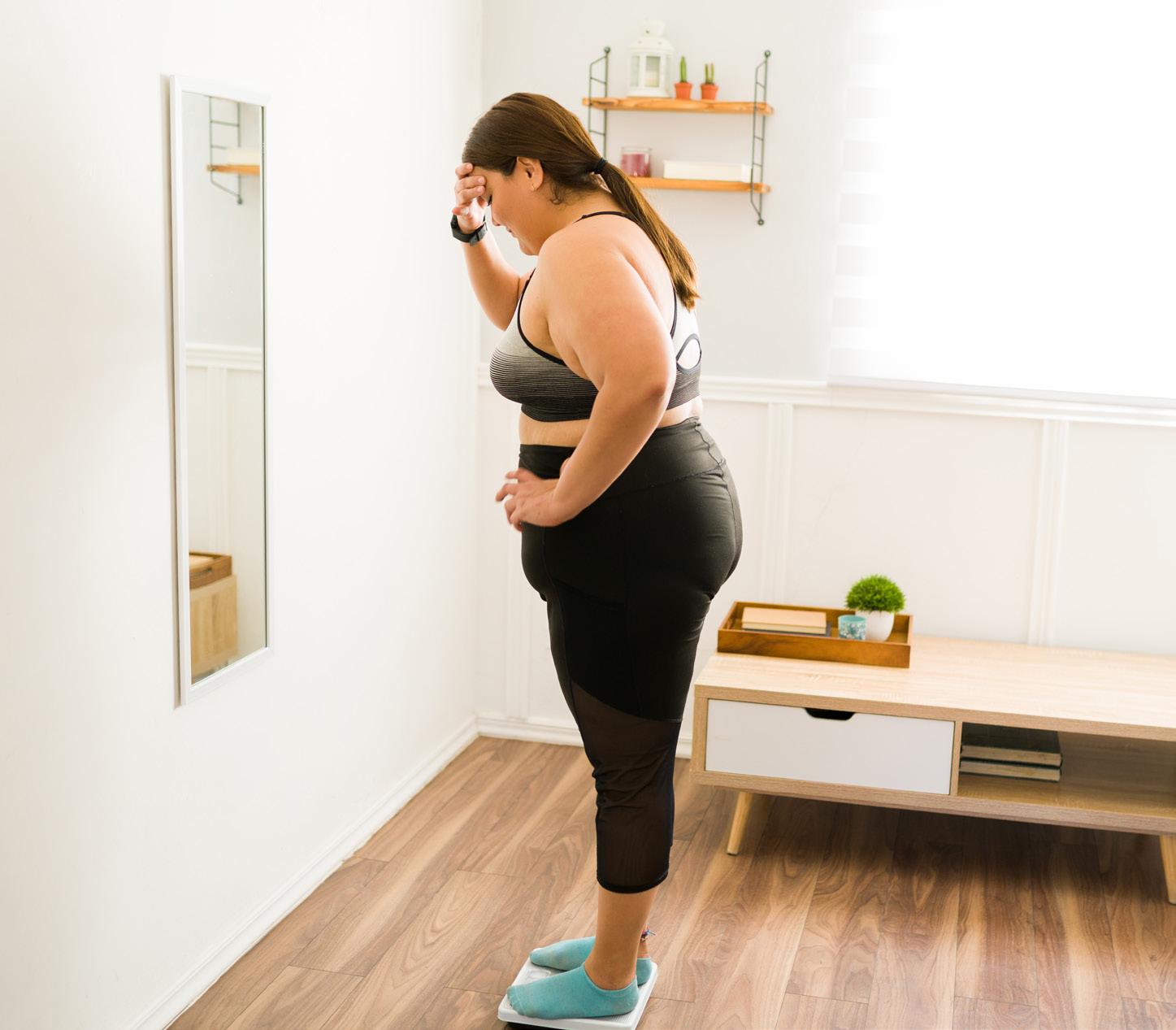
Hall is a gastric bypass specialist. “Severe obesity is a chronic condition,” he said. “It’s difficult to treat through diet and exercise alone. Surgical intervention has been shown to be more effective than non-surgical interventions for sustained weight loss.”
In gastric bypass surgery, the physician makes changes to your stomach and small intestine to change the way they absorb and digest food. It aids weigh loss by restricting the amount of food that your stomach holds.
For this surgery to be successful, patients must be dedicated to a life style change and lifetime of follow-up appointments, added Hall.
“Yes, there is a direct correlation between obesity and the extent of physical complications,” he said. “The more obese you are, the more likely you are to develop multiple medical problems.”
Page 14 • IN GOOD HEALTH – Mohawk Valley’s Healthcare Newspaper • February 2023
Keneth Hall
Carpel Tunnel Syndrome: Women Much More at Risk
Women get carpal tunnel syndrome three times more often than men
By Barbara Pierce
Carpal tunnel syndrome is a common condition that causes numbness, tingling and pain in the hand and forearm. It happens when one of the major nerves to the hand is crushed or squeezed as it travels through the wrist.
“The most common cause of carpal tunnel is chronic, repetitive motions of the hands such as typing, driving, writing, or using vibrating tools,” said Aymen Rashid, orthopedic surgeon at Mohawk Valley Health System Orthopedic Group, Utica. “Sleeping with your hands bent can increase the symptoms.”


Women get carpal tunnel syndrome three times more often than men. It occurs most often in people ages 30 to 60. Conditions that increase the likelihood of carpal tunnel include diabetes, rheumatoid arthritis, being pregnant and previous trauma to your wrist, he added.

Symptoms usually start gradually, with frequent numbness or tingling in the fingers, especially the thumb and the index and middle fingers. For some people, their fingers feel useless and swollen, even though little or no swelling is apparent.
The symptoms often first appear in one or both hands or arms during the night. You might feel numbness, tingling, burning sensations. Your dominant hand is usually the first affected and produces the most severe symptoms. You may feel the need to “shake out” your hand or wrist. As you get rid of these symptoms with a few flicks of the wrist, you may not think much about them, but, for most people, it will continue to get worse.
As symptoms worsen, people might feel tingling during the day, especially with certain activities such as talking on the phone, reading a book or newspaper or driving. Hand weakness may make it difficult to grasp small objects or perform other manual tasks. Some people with very severe carpal tunnel can’t differentiate between hot and cold by touch and may burn their fingertips with-
out knowing it.
Early diagnosis and treatment are important to avoid permanent damage to the nerve.
A physical examination of the hands, arms, shoulders and neck can help determine if the symptoms are related to daily activities or to an underlying disorder and can rule out other conditions that mimic carpal tunnel syndrome.
Routine laboratory tests and X-rays can reveal fractures, arthritis and nerve-damaging diseases such as diabetes.
Treatments for carpal tunnel syndrome should begin as early as possible, under a doctor’s direction. Underlying causes such as diabetes or arthritis should be treated first.
How is carpal tunnel syndrome treated?
“The simplest treatment to start with is using a carpal tunnel brace,” said Rashid. “This will help to prevent your wrist from being bent which increases your chances of having symptoms.”
The brace worn at night is often the initial treatment.
Also, avoid daytime activities that may cause your symptoms. Take frequent breaks from repetitive movement, to rest your hand. If your wrist is red, warm and swollen, applying cool packs can help.
Anti-inflammatory medications, such as aspirin, ibuprofen and other nonprescription pain relievers may provide some short-term relief from discomfort but haven’t been shown to treat carpel tunnel.
“Other treatments include a cortisone injection in your wrist to temporarily alleviate your symptoms,” Rashid added.
Those with diabetes and those who may be predisposed to diabetes should note that prolonged use of corticosteroids can make it difficult to regulate insulin levels.
Acupuncture and chiropractic
care have benefited some individuals but their effectiveness remains unproved.
“Ultimately, when the symptoms become severe and constant, the best treatment for a long-term resolution of symptoms is surgery to open the carpal tunnel,” said Rashid.
Carpal tunnel release is one of the most common surgeries in the U.S. Generally, surgery involves severing a ligament around the wrist to reduce pressure on the median nerve. It is usually done under local or regional anesthesia and does not require a hospital stay. Many people require surgery on both hands.
Following surgery, most people need to modify work activity for several weeks or even change jobs.
Recurrence of carpal tunnel syndrome following treatment is rare. Some residual numbness or weakness is common.
How can carpal tunnel syndrome be prevented?
“At the workplace, workers can do on-the-job conditioning, perform stretching exercises, take frequent rest breaks and use correct posture and wrist position,” suggested Rashid. ”Wearing fingerless gloves can help keep hands warm and flexible. Workstations, tools and tool handles, and tasks can be redesigned to enable the worker’s wrist to maintain a natural position during work. Jobs can be rotated among workers. Employers can develop
programs in ergonomics, the process of adapting workplace conditions and job demands to the capabilities of workers.”
“However, research has not conclusively shown that these workplace changes prevent the occurrence of carpal tunnel syndrome,” he added.
“The best way to prevent carpal tunnel is to protect your hands from long stretches of repetitive motions,” advised Rashid. “Take frequent breaks from those repetitive actions, stretch your hands frequently. Try to change your posture and use padding and cushions around your hands if possible.”
February 2023 • IN GOOD HEALTH – Mohawk Valley’s Healthcare Newspaper • Page 15
To distribute copies of In Good Health, MV’s Healthcare Newspaper, in offices and other high traffic locations in Oneida and Herkimer counties Great for active retirees or at-home moms in need of some extra cash. Not a regular job. Work only one or two days a month during office hours (9 to 5). Compensation: $14.20 /h plus 30 cents per mile. It amounts to about $150 - $200 per month. No heavy lifting. Drivers are required to have a dependable vehicle, be courteous and reliable. We audit all areas of distribution. Call 315-749-7070 and ask for Loni for more information. DRIVERS WANTED HOW CAN NY CONNECTS HELP? (800) 342-9871 of MADISON COUNTY (315) 697-3092 (315) 697-5700 For answers to all your questions Contact us at 800-342-9871 or call one of the NY Connects partnering agencies at 315-697-5700 You may also look for services and support at www.nyconnects.ny.gov Free, easy, local access to information and assistance about long term care services and supports… regardless of age, income, or payor source. Get help with community services/supports designed to help people remain healthy and independent for Older Adults, Adults or Children with Disabilities as well as their Families and Caregivers.
Aymen Rashid, orthopedic surgeon at Mohawk Valley Health System Orthopedic Group, Utica.
The Balanced Body
By Deborah Dittner
The Health of Our Children
Consider food as medicine when developing your child’s palate
The health of our children begins at home in the kitchen.
Even before conception, mom and dad need to eat whole nutrient dense foods and tend to any medical conditions, exercise, sleep well and basically get back to the basics of living a healthful life.
Once baby is born with mom providing in the early months of nutrition, health and immune building occur. Once the child starts eating solids, providing whole nutrient dense foods will encourage healthful eating for their entire lives. These nutrition packed foods will build healthy minds, body — and soul.
So, what to feed your children?
Anti-inflammatory, pre- and probiotic-rich, the colors of the rainbow, fiber, locally grown (or grow it in your own garden) and eat seasonally. This will provide a number of yummy choices that even the pickiest of eaters will enjoy.
• Avocado: There is so much that can be done with an avocado. Sliced or cubed, avocado can be added to salads, made into a pudding, mashed on toast, made into guacamole as a dip for carrots, celery and cucumbers and added into smoothies.
Avocados are rich in fiber and magnesium, and are a healthy fat source.
Avocado Dip
Ingredients: 1 large peeled and pitted avocado
2/3 cup plain, non-dairy yogurt
Ask
1 diced tomato
Dash or 2 of cayenne pepper
Sea salt and black pepper to taste
Directions: Mash avocado with a fork until very smooth
Add yogurt, tomato, and cayenne. Blend until smooth.
Add sea salt and pepper to taste
Serve chilled with mixed raw veggies
• Beans and legumes: Magnesium and fiber-rich plant-based protein come in a variety from chickpeas, black beans, edamame and more. Add to soups, roast with spices, topping for tacos and making hummus gives numerous ways to enjoy. Green peas are also a great finger food for babies and toddlers.
• Yogurt: Gut-healthy dairy and non-dairy yogurt, this fermented food may fortify the gut encouraging “good bugs” to aid in digestion. Choose plain, organic varieties with live active cultures. The fruit flavored versions often contain a lot of unnecessary sugar. Yogurt can be topped with cinnamon and berries, added to smoothies and used as a topping for fruit compotes.
• Wild caught salmon: Full of omega-3 fatty acids, salmon can decrease anxiety, boost mood and bring about emotional balance. Including salmon in the diet at a young age will encourage life-long enjoyment.
• Eggs: From scrambled to sunny side up, to omelets, eggs contain melatonin and choline. Adding in veggies (especially in omelets) can
The Social Security Office
From the Social Security District Office
Social Security Launches Redesigned Website
Have you visited the redesigned SSA.gov yet? In December 2022, we updated our homepage with a new design to help you find what you need more easily.
SSA.gov is visited by over 180 million people per year and it is one of our most important tools for providing efficient and equitable access to service. Whether providing service in person or online, our goal is to help people understand what they may qualify for and seamlessly transition them to an application process. Now, with improved self-service accessibility to online services, you might not have to call or visit an of-
fice to get what you need. This helps our staff focus on serving customers who need in-person assistance.
• Reimagined website prioritizes customer experience
The redesign is intended to provide a clear path to the tasks you need to accomplish. Many of the most visited sections of SSA.gov are now live with a more user-friendly and task-based approach. New pages and improvements based on public feedback will continue to be unveiled in the coming months, as part of our ongoing efforts to improve how the
also be a great dinnertime meal. If eggs are not tolerated, consider using quinoa or soybeans into recipes.
• Jicama, carrots and cucumbers: Super crunchy, great for teething, and full of vitamins, minerals and prebiotics. Add into salads, dip into hummus or guacamole, or shredded into a slaw gives variety.
• Nuts: A great snack for those without allergies. This simple snack contains healthy fat, fiber, omega 3s and crunch especially when preparing your own “trail mix” or “gorp” with other seeds (sunflower, pumpkin) and dried fruit (omitting ones with added sugar).
• Dark chocolate: Purchasing raw, organic dark chocolate with a minimum of 70% cacao will add antioxidants and is considered a fermented food good for the gut. Avoid added sugar or dairy. Cacao powder can be added to smoothies and be used to make puddings.
public can do business with us.
When you visit SSA.gov, you can use interactive tools to:
• Check eligibility for benefits
The new benefit eligibility screener is a convenient and simple way for you to learn if you might be eligible for benefits.
• Save time on Social Security number (SSN) and card online services
If you lose your SSN card, you may not need a replacement. In most cases, simply knowing your SSN is enough. If you do need a replacement card, you may be able to request it online by visiting our Social Security Number and Card page at www.ssa.gov/ssnumber.
You can also start an application for an updated card or request an SSN for the first time. You may never need to go to an office, but if you do need to visit an office to complete the application then you can save a lot of time by starting online.
• Start an application for Supplemental Security Income (SSI)
You can start the application process online and request an appointment to apply for SSI benefits by answering a few questions on our SSI
• Herbs and spices: So many options to choose from providing nutrition, flavor and health benefits. Experiment frequently.
Introducing children at an early age to eat healthfully will help develop their taste buds for more nutritious eating as they grow.

Consider “food as medicine” when developing your child’s palate for a lifetime full of healthy eating.
Deborah Dittner is a family nurse practitioner and health consultant. Her mission is to transform as many individuals as possible through nutrition and lifestyle changes. For more information, check out her website at www.debdittner. com or contact her at 518-596-8565.

page at www.ssa.gov/ssi.
• Apply for Social Security benefits and other online services
For most benefits, you can apply online or start an application online. In many cases, there are no forms to sign. We will review the application and contact you with any questions or if we need more information. Visit our online services page at www. ssa.gov/onlineservices to apply for retirement, disability or Medicare.
Many Social Security services do not require an office visit. If you have a personal My Social Security account, you can start or change direct deposit, request a replacement SSA1099, or print or download a current benefit verification letter if you need proof of your benefits.
If you’re not yet receiving benefits, you can use your online account to get a personalized Social Security statement, which provides your earnings information as well as estimates of future benefits. The portal also includes a retirement estimator tool and links to information about other online services. We encourage people without a personal My Social Security account to create one today at www.ssa.gov/myaccount.
Please share this with your loved ones and post it on social media.
Page 16 • IN GOOD HEALTH – Mohawk Valley’s Healthcare Newspaper • February 2023
Between You & Me


 By Barbara Pierce
By Barbara Pierce
People Treat Us the Way We Let Them
Remember Seinfeld, the TV show we all watched? Kramer made us laugh when he came, uninvited, into Jerry’s apartment, drank from the bottle of milk in Jerry’s refrigerator, walked out taking a shirt or something of Jerry’s.
We laughed, but, in real life, when people treat us like this, it isn’t a laughing matter.
We teach people how to treat us by what we allow or what we don’t allow — what we stop. If we allow someone to come into our home and take stuff, if we don’t stop them, this lets them think it’s OK and they will continue this behavior.
People like Kramer are all around us: the friend who often cancels out on us at the last minute, the boss who totally ignores our opinion, the partner who humiliates us or puts us down.

It happens to us all, regularly. We assume that they know that what they’re doing is not OK. Surely my friend knows it’s not OK with me when she cancels at the last minute. But does she? Maybe not. Maybe my partner is totally oblivious to the fact that I hate when he makes jokes at my expense.
But they can’t read my mind. I can’t make these assumptions.
People treat us the way we let them. We teach them how to treat us by the way we respond to the way they treat us. If we don’t respond, if we let them do it, this reinforces their behavior and increases the chances they’ll do it again. If we stop them, this decreases the chances they won’t repeat the behavior.
When it comes to people, what isn’t stopped tends to happen again. That’s the way humans are wired.

When people treat us in ways that are not OK with us, what can we do about it? We may be tempted to retaliate, do something to make them pay for what they’ve done, try to “one-up” them, help they feel the pain they’ve caused us.

But these tactics rarely work. They don’t correct the problem at all, maybe even make it worse. People generally don’t respond well to retaliation. Or being “taught a lesson.” Or being scolded for their behavior. They’re more likely to be bitter or resentful towards you.
What we can to is simply teach them a better way. In a pleasant manner, teaching them what we prefer.

Or what we don’t want.
Their response may not happen quickly. The longer the pattern has been in place, the longer it will take to undo it. Accept that — don’t be discouraged if you don’t get immediate results.
Whether it’s desirable behavior or undesirable behavior, the behavior that’s reinforced is the behavior that’s likely to continue.
So don’t reinforce what you don’t want to continue. The best way to stop a behavioral pattern is by removing the reinforcement for the behavior.

For example, young children learn that they can get their way by throwing a temper tantrum. The parent wants the behavior to stop, so he promises the child a treat if they stop. The child stops. He gets a treat.
What the child has learned is that temper tantrums are a great way to get a treat.
The goal is to not reinforce this undesired behavior. Instead of rewarding the child for stopping the tantrum, we need to ignore the tantrum, remain calm, firm and resolute in our convictions. The child will soon learn that temper tantrums are terrible strategies for getting a reward and will stop using them.



This approach works because the change comes from the person who needs to change. It’s not dictated to them or forced upon them from the outside. That way, it’s more likely to
continue.
So be diligent in reinforcing the behavior you want, not the behavior you don’t. You don’t need to talk about it like a scolding grade school teacher. Just withhold the reward. Don’t reinforce the behavior you want to stop.

And offer a lot of reinforcement when the person behaves the way you want them to.


For example, when I moved in with my boyfriend, I was surprised when he’d disappear at night. Then I’d hear him snoring in bed. I wanted him to say good night, let me know he was going to bed. His behavior wasn’t OK. I experimented. Every now and then, he’d give me a good night hug before he took off. I said “I love it when you give me a good night hug!” Those nights came more and more frequently. All it took was a little reinforcement on my part.
we can definitely help!
If you need acupuncture, our facility has certified and trained physicians for your holistic care. If you suffer from alcoholism, or opioid addiction, schedule an appointment today! We also treat Hepatitis C, and again, WE ARE HERE TO HELP. Call today to schedule an appointment.







February 2023 • IN GOOD HEALTH – Mohawk Valley’s Healthcare Newspaper • Page 17
Barbara Pierce is a retired licensed clinical social worker with many years of experience helping people. If you would like to purchase a copy of her book, “When You Come to the Edge: Aging” or if you have questions for her, contact her at barbarapierce06@yahoo.com.
Not a Subscriber? OPENTOALL ALSO INSIDE KidsandFoods:TipsforParents 15 DealingwithUrinaryTractInfections 16 ConqueringCancer Advances in cancer treatment offer hope Emphasis should be on mammograms innovative approaches to cancer treatments P. 11 MVCCStrategicGamingClubmembersandstudentsplayingmagicalcardgamesin20182toraisemoneyforthe Children’sMiracleNetwork.AneweventisscheduledforNovember.Storyonpage MVCC VIDEO GAME MARATHON TO RAISE MONEY FOR HOSPITALS Executive director Jewish GreaterCommunityCenterof Utica talks about theorganizationandsays itsprogramsareopentoall, regardlessofrace,ethnicityor faith.P. DAILYCHECK-IN SERVICESFORSENIORS MVHEALTHNEWS.COM Youcannotchangethenumberofyearsyouhavebeenalive.Butyoucanchangeand improveuponhowyourbodymanagesthewearandtearoneverydayliving. THE BENEFITS OF BEING FIT NOVEMBER 2022 • ISSUE 201 EMPOWERING WOMEN Director of Utica-based Empowered Pathways Stephanie Eghigian discusses how the agency helps women to return to the workforce, and how it helps people in the going through the court systems. P.15 FLU RATES WAY UP CDC: The hospitalization rate from flu cases is higher than the rate observed at this same point during previous flu seasons. P.7 Tips on choosing the ideal healthy gift for a friend or loved one P. 13 HEALTHY GIFTS MVHEALTHNEWS.COM DECEMBER 2022 • ISSUE 202 FREE A young girl from Somalia who now lives in Central New York is among 1,840 individuals and 800 families who get help from RISE (Refugee & Immigrant Self-Empowerment) in Syracuse. The nonprofit helps refugees navigate the healthcare system and deal with a variety of issues. P.20 HELPING REFUGEES NAME ADDRESS CITY/TOWN STATE ZIP 1 YEAR (6 ISSUES) $21.00 $35.00 2 YEARS (12 ISSUES) Clip and Mail with payment to: In Good Health Subscribe today and get In Good Health: MV’s Healthcare Newspaper right to your home or office! 4 Riverside Drive, Box 251 Utica, NY 13502 (315) 507-4751 Most insurances accepted. We do not take Worker’s Comp or No-Fault insurance. CALL TO MAKE AN APPOINTMENT TODAY! 1 Oxford Crossing, Suite #1 New Hartford, New York 13413 Accepting NEW patients. We are a Primary Care Clinic. www.falconclinic.com Richard Chmielewski, DO, NMM/ OMM Brian Zylinski, DO, NMM/OMM George Kozminski, MD, LAC (acupuncture) Our residency trained and board-certified physicians offer the best in Primary Care as well as Osteopathic Manipulative Treatment and Acupuncture for all types of medical problems. Are you in need of a Family Doctor? Our office provides a variety of services including treatment of high blood pressure, diabetes, depression, migraines, rashes, and sinus or bronchitis infections. We
help.
Osteopathic
and
can
If you need hands-on
treatment for fibromyalgia, neck
shoulder, hip, knee or low back problems, trigger point injections for pain,
Rose Quartz ZenStone Crystal Experience
Rose Quartz massage enhances energy and promotes self-love. Your treatment room is prepared with a healing crystal grid using rose quartz, clear quartz & citrine. Rose quartz and labradorite palm stones are incorporated into every massage.

 By Jim Miller
By Jim Miller
How to Cover Dental Care in Retirement


Dear Savvy Senior, I had dental insurance through my work for many years but lost it when I retired and joined Medicare. Where can retirees find affordable dental care?

Uninsured Al

Dear Al,
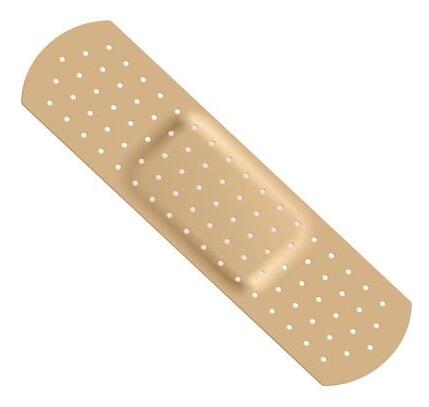
Unfortunately, about two-thirds of U.S. retirees don’t have dental insurance today. Without coverage from traditional Medicare, and with private dental insurance typically costing too much to be feasible, most seniors are stuck paying full out-ofpocket prices every time they visit a dentist. While there’s no one simple solution to affordable dental care there are a variety of options that can help cut your costs. Here’s where to look.
• Medicare Advantage: While dental services are mostly excluded under original Medicare, many Medicare Advantage plans do provide coverage for dental care, but it’s usually very limited. Medicare Advantage plans are government approved health plans (usually HMOs and PPOs) sold by private insurance companies that you can choose in place of original Medicare. To shop and research Advantage plans in your area visit Medicare.gov/plan-compare or call 800-633-4227.
• Dental insurance: If you have gum problems and need extensive dental care, a dental insurance plan may be worth the costs versus paying for care yourself. Monthly premiums for individual plans range from about $20 to $80. A typical plan includes two or three cleanings and checkups per year, but these plans will likely have a waiting period — anywhere from a few months to a few years — before coverage for more expensive procedures kicks in. To find dental plans in your area, see eHealthInsurance.com.
• Dental savings plans: While savings plans aren’t as comprehensive as insurance, they are a good option for those who don’t have dental insurance. How this works is you pay an annual membership fee — around $80 to $200 a year — in exchange for 10% to 60% discounts on service and treatments from participating dentists. To find a savings plan, go to DentalPlans.com (or 888-632-5353) where you can search for plans and participating dentists, as well as get a breakdown of the discounts offered.

• Veterans’ benefits: If you’re a veteran enrolled in the VA health care program or are a beneficiary of the Civilian Health and Medical Program (CHAMPVA), the VA offers a dental insurance program that gives you the option to buy dental insurance through Delta Dental and MetLife at a reduced cost. The VA also provides free dental care to vets who have dental problems resulting from service. To learn more about these options, visit VA.gov/dental or call 877-222-8387.

• Cheaper dental care: Because prices can vary by dentist, one way to ensure you get a good deal on your dental care is to call multiple provides and compare prices. To get an idea of what different dental procedures cost in your area, see FairHealthConsumer.org. If you’re paying cash, it’s also perfectly reasonable to ask your dentist for a discount.



There are also a number health centers and clinics that provide low-cost dental care to those in need. And all university dental schools and college dental hygiene programs offer dental care and cleanings for less than half of what you would pay at a dentist’s office. Students who are supervised by their professors provide the care. See TeethWisdom.org to search for a center, clinic or school near you.

Page 18 • IN GOOD HEALTH – Mohawk Valley’s Healthcare Newspaper • February 2023
Send your senior questions to: Savvy Senior, P.O. Box 5443, Norman, OK 73070, or visit SavvySenior. org. Jim Miller is a contributor to the NBC Today show and author of “The Savvy Senior” book. www.zensationsmassage.com • (315) 339-9100
USE CODE: SELFLOVE Receive $20 off when booking online or call the office and mention same code Highest Prices Paid We BUY TEST STRIPS We will pick up and pay on the spot We pick up 6 days a week. 11am to 6:30pm One Touch Ultra & Freestyle Lite. All Brands Considered. Up to $50. (585)-284-3455 Ad Letter MP Order Proposal# the classification of: 05/2014 change, please contact your sales representative Book Customer Service at 1-800-891-1899. AAMZHMB2DNLMA Acct# A1ZGFE Sales Rep: GRIMALDI, JENNIFER L Size: HCN6 Ad Id: AMZHMA1 Contract# 5544766 Listing Information: AMZHMDNLM 14-Mar-2014 07:57 appear at the classification of: Date 05/2014 require a change, please contact your sales representative Yellow Book Customer Service at 1-800-891-1899. SIGNATURE: __________________________ DUPLICATE PROOF AAMZHMB2DNLMA 2014 Acct# A1ZGFE Sales Rep: GRIMALDI, JENNIFER L Size: HCN6 Ad Id: AMZHMA1 Contract# 5544766 Corresponding Listing Information: Please Note: Print quality may vary from final product. Ad Letter MP Order Proposal# the classification of: 05/2014 change, please contact your sales representative Book Customer Service at 1-800-891-1899. __________________________ DUPLICATE PROOF AAMZHMB2DNLMA Acct# A1ZGFE Sales Rep: GRIMALDI, JENNIFER L Size: HCN6 Ad Id: AMZHMA1 Contract# 5544766 Listing Information: Please Note: Print quality may vary from final product. appear at the classification of: Date 05/2014 require a change, please contact your sales representative Yellow Book Customer Service at 1-800-891-1899. SIGNATURE: __________________________ DUPLICATE PROOF 2014 Acct# A1ZGFE Sales Rep: GRIMALDI, JENNIFER L Size: HCN6 Ad Id: AMZHMA1 Contract# 5544766 Corresponding Listing Information: Please Note: Print quality may vary from final product. Ad Letter MP Order Proposal# classification of: 05/2014 change, please contact your sales representative Book Customer Service at 1-800-891-1899. AAMZHMB2DNLMA Acct# A1ZGFE Sales Rep: GRIMALDI, JENNIFER L Size: HCN6 Ad Id: AMZHMA1 Contract# 5544766 Listing Information: AMZHMDNLM 14-Mar-2014 07:57 You may be eligible for shoes at little or no cost! at the classification of: 05/2014 a change, please contact your sales representative Yellow Book Customer Service at 1-800-891-1899. __________________________ DUPLICATE PROOF AAMZHMB2DNLMA 2014 Acct# A1ZGFE Sales Rep: GRIMALDI, JENNIFER L Size: HCN6 Ad Id: AMZHMA1 Contract# 5544766 Listing Information: Please Note: Print quality may vary from final product. You may be eligible for shoes at little or no cost! Letter MP Order Proposal# at the classification of: 05/2014 require a change, please contact your sales representative Yellow Book Customer Service at 1-800-891-1899. AAMZHMB2DNLMA 2014 Acct# A1ZGFE Sales Rep: GRIMALDI, JENNIFER L Size: HCN6 Ad Id: AMZHMA1 Contract# 5544766 Listing Information: AMZHMDNLM 14-Mar-2014 07:57 Diabetes? Flat Feet? Plantar Fasciitis? You may be eligible for shoes at little or no cost! Ad Letter MP Order Proposal# will appear at the classification of: Home Date 05/2014 you require a change, please contact your sales representative call Yellow Book Customer Service at 1-800-891-1899. SIGNATURE: __________________________ DUPLICATE PROOF AAMZHMB2DNLMA March 17, 2014 Acct# A1ZGFE Sales Rep: GRIMALDI, JENNIFER L Size: HCN6 Ad Id: AMZHMA1 Contract# 5544766 Corresponding Listing Information: Please Note: Print quality may vary from final product. AMZHMDNLM 14-Mar-2014 07:57 Diabetes? Flat Feet? Plantar Fasciitis? You may be eligible for shoes at little or no cost!
Reach nearly 60,000 health- conscious readers in Mohawk Valley. Advertise with In Good Health—MV’s Healthcare Newspaper. editor@mvhealthnews.com
MVHS announces winners of DAISY award nurses
The Mohawk Valley Health System (MVHS) recently announced three winners of the DAISY Award for Extraordinary Nurses, an award which recognizes nurses for the amazing efforts they perform every day.
The winners of the awards each received a hand-carved statue, a certificate and scholarship opportunities for continued learning.
The winner nurses are:
• Anita Moller, a perioperative nurse manager for MVHS. She was nominated for her cheerful courtesy.
• Carrie Seelbach works at the MVHS orthopedic medical office. She was nominated for her thoroughness and expert attention to detail.
• Iryna Karpovich works in the Intermediate Care Unit (IMCU) at the St. Elizabeth Campus of MVHS. She was nominated for the comfort and reassurance she provided.

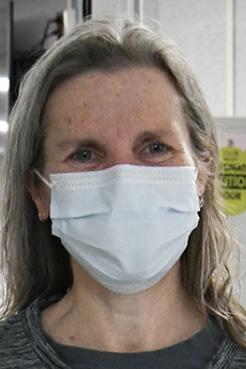

Each winner is selected from a pool of nominations submitted by patients and/or family members, then evaluated by a group of peers from across the health system.
“We are so proud of our nurses,” said Nancy Traxel, education services manager at MVHS. “Each winner is so deserving of this honor for the extraordinary care, compassion and clinical excellence they demonstrate every day.”
Rome Memorial recognized for spine surgery procedures

Excellus BlueCross BlueShield has selected Rome Memorial Hospital as a Blue Distinction Center for
ICAN’s Evelyn’s House Program Receives
$90,000 Grant from Excellus to Address Maternal Health Disparities
Spine Surgery, part of the Blue Distinction Specialty Care program.
Blue Distinction Centers are
Rome Health Welcomes County Executive for Tour of New Women’s Surgical Suite Construction Project
Rome Health on Feb. 3 welcomed Country Executive Anthony Picente to tour the construction progress of the new women’s surgical suite.
The new dedicated C-section suite is being constructed adjacent to the maternity separtment on the fourth floor. The majority of the $3.9
million capital project is being funded through the county’s investment of $3 million in federal American Rescue Plan Act (ARPA) funds.
“We are grateful to County Executive Anthony Picente for helping Rome Health ensure that the best maternity care is easily accessible to
nationally designated health care facilities that show a commitment to delivering high-quality patient safety and better health outcomes, based on objective measures that were developed with input from the medical community and leading accreditation and quality organizations.
proud to be recognized by Excellus BlueCross BlueShield for meeting the robust selection criteria for spine surgery set by the Blue Distinction Specialty Care program. Dr Nicholas Qandah, Medical Director of Rome Memorial Hospital’s Neurospine program, along with the neurospine team continue to provide our community with high quality care and excellent patient outcomes,” said President and Chief Executive Officer AnneMarie W. Czyz.
Anne
Facilities designated as Blue Distinction Centers for Spine Surgery demonstrate expertise in cervical and lumbar fusion, cervical laminectomy and lumbar laminectomy–discectomy procedures, resulting in fewer patient complications and readmissions compared to other hospitals. All designated facilities must maintain national accreditation.
“Rome Memorial Hospital is
ICAN and Excellus BlueCross BlueShield recently announced the receipt of the Excellus BCBS Member and Community Health Improvement (MACHI) grant to support Evelyn’s House — ICAN’s joint transitional and rapid rehousing program for homeless women, aged 16-24, who are pregnant and/or parenting.

This round of Excellus BCBS MACHI grants focused on improving maternal health and health equity in Upstate New York.
Eight non-profit organizations in the health plan’s 39 county service area will share $1 million in grant funding over the next three years. Evelyn’s House has been awarded a $90,000 grant ($60,000 for year one, $15,000 for years two and three) which will support comprehensive prenatal and postpartum care, transitional housing, and a supportive peer community for young homeless women who are pregnant and/or parenting.
The core components that will be supported through the grant are:
• Evelyn’s House Transitional Shelter — Located in Utica, this shelter is available to young women (ages 16-24) and their children from across Upstate New York who are homeless, pregnant or parenting and in need of support.
The shelter is open and staffed 24 hours per day, 7 days per week.
• Intensive, Wraparound Case Man-
the women of Rome and the surrounding rural communities,” said Rome Health President and Chief Executive Officer AnneMarie Czyz. “Along with the approval of the Oneida County Board of Legislature, the county’s investment will help us to accelerate our plans for expanding access to the best care out there, here in Rome.”
Construction of the new dedicated C-section suite remains on target to be completed in the spring of 2023. Approximately 2,000 square feet of existing space is being renovated and
“Rome Memorial Hospital strives to deliver the highest level of excellence in neurospine care in this region,” said Qandah, “Our commitment to quality and state-of-the-art technology provides patients with incredible outcomes so they can get back to the things that they enjoy.”
“Congratulations to Rome Memorial Hospital on achieving this important quality recognition,” said Eve Van de Wal, Excellus BlueCross BlueShield Utica regional president. “The Blue Distinction designation is an important quality and transparency tool to help members make informed decisions about their health care.”
agement — While at Evelyn’s House, young mothers receive intensive case management, including evidence-based parenting classes and other resources to prepare them for employment, nutrition, health and wellness plans, mental health treatment and obtainment of permanent housing.
• Peer Support — ICAN has a significant history in employing and utilizing peer specialists. Past Evelyn’s House residents will be trained to work as peers, bringing their unique expertise, important perspective, and deep commitment to supporting women who are facing issues similar to those they previously navigated themselves.
ICAN will assist them with credentialing so they can gain marketable skills for future employment.
• Nurturing Parenting Program
Access — Two staff members will be trained to become nurturing parenting program (NPP) facilitators and the program will be fully integrated for residents on a weekly basis. NPP is a national, evidence-based, culturally-inclusive and trauma-informed program that is proven to prevent recidivism in families receiving social services, lower the rate of multi-parent teenage pregnancies, reduce the rate of juvenile delinquency and alcohol abuse, and stop the intergenerational cycle of child abuse by teaching positive parenting behaviors.
converted to a modern surgical suite adjacent to the Maternity Department for enhanced patient safety.
Although the hospital’s C-section rate is better than the state average, the hospital’s overall obstetrics volume grew 28.5% between 2020 and 2021 with the hospital’s designation as one of only two “Best Maternity Hospitals” in the state. In 2021, 744 babies were born at Rome Health.
Rome Health was just recently awarded U.S News & World Report 2022-2023 High Performing Hospitals for Maternity.
February 2023 • IN GOOD HEALTH – Mohawk Valley’s Healthcare Newspaper • Page 19
News
Health
Marie Czyz
FROM L to R: Anita Moller, Carrie Seelbach, Iryna Karpovich
FROM LEFT TO RIGHT: Shayna Keller, Excellus BCBS community investments and partnerships manager; Rosetta St. Peter, Evelyn’s House housing director; Lisa Reginelli, ICAN director of transitional services; Allison Jackson, ICAN chief program officer; Eve Van de Wal, Excellus BCBS regional president; and Steven Bulger, ICAN CEO and executive director.
Wear Your Way to Better Health
By Amanda Jowsey
Wearable health technology is one way that people are beginning to take their health and wellness into their own hands—or eventually their ears and feet and every other part of the body imaginable.
These devices can increase longevity by improving health and preventing disease, improve communication between doctors and patients and provide peace of mind. Incorporating them into our daily lives is a great way to track poor habits and begin and follow better ones.
They can increase productivity, boost self-esteem and facilitate a grounding sense of purpose.
Here are the latest trends in wearable health technology:
Apple Watch Series 8
This is the most comprehensive wearable device currently available when it comes to overall health. It covers sleep, menstrual cycles, blood pressure, emergency situations and more.
It can act as a sleep tracker, recording time spent in different sleep stages. These stages are key to understanding and getting better sleep. It can help to keep a sleep diary as well, which is one of the first steps to practicing healthy sleeping habits.
A new temperature sensor records your temperature while users sleep, so users can see patterns over time. “Cycle tracking uses this data to provide a retrospective estimate of when you likely ovulated, which can be helpful for family planning. When combined with your heart rate and logged cycle data, you’ll get a detailed view of your menstrual cycle,” Apple said.
With a blood oxygen monitor and electrocardiogram app, users can also stay on top of their heart health. Heart disease is the leading cause of death in the United States. Additional features include crash and fall detection and other emergency services that give unparalleled peace of mind to users.
Oura Ring
The Oura Ring focuses primarily on sleep health. It is a more discreet and lightweight option than the Apple watch.
Referred to as “a sleep lab on your finger,” this ring tracks your sleep quality and all four sleep stages: Deep sleep (physically restorative stage), REM sleep (mentally restorative stage), light sleep and awake periods. A daily “sleep score” is then provided based on personalized, real-time data points: total sleep, REM sleep, deep sleep, timing, movement, heart rate, heart rate variability and more.
But how do knowing these things lead to better sleep and eventually better health? By learning a person’s unique sleep patterns, the app then shares personalized guidance and reminders on how to get the best sleep every day. It might recommend when to start winding down for bed, or what to avoid during that day, for example. It creates a personalized sleep routine based on what your body is already doing.
It allows you to keep track of daily and nightly activities or food and drinks you’ve had before bed to see how these things may impact you over time. It offers sleep sounds and stories for relaxation before bed and remembers those that may have helped someone fall asleep faster so it can be used again.
Quality sleep boosts immunity, helps with weight management, decreases the risk for heart disease and brain diseases like dementia, helps to manage stress and improves memory and productivity.
Fitbit by Google
Fitbits by Google are wearable trackers that can help users stay on top of their fitness goals, monitor overall health and even manage stress. They track health metrics like respiration, blood oxygen levels and skin temperature “to uncover trends

and changes in your daily well-being,” Google said.
They can help detect and indicate illness or hormone fluctuations, stress and fatigue. They provide a daily readiness score based on activity, sleep and heart rate, and will base exercise recommendations on a person’s daily readiness so that they can work with their body rather than against it.
Studies show that devices like Fitbit do motivate individuals to exercise more frequently and improve overall health. The American Medical Association said adults who take 8,000 or more steps each day have a lower risk of death from numerous diseases than those who take fewer than 4,000. The average American takes 3,000 to 4,000 steps per day.
Jessie Adamski, a close friend and fitness fan from Buffalo, is one of the first people I know who started using a Fitbit in 2016 when she stared her health journey. She still uses it today.
“It motivated me to live a healthier lifestyle,” she said. “I definitely saw an improvement in my overall health.”
She used the Fitbit in conjunction with a food diary app to track calories and make healthier food choices. “At one point I was able to lose 40 pounds in a year by tracking everything,” she added. “It kept me accountable for reaching my goals. My cholesterol levels improved as well as my energy levels. I wanted to get out and be more active.”
“I even got my dog, Ellie, a ‘Fitbark,’ which is basically a Fitbit for dogs. For the first couple years I had her, I made sure both of us reached our goals as much as possible by going on walks, to dog parks and playing. I thought it was a cool thing to have and helped us both be healthy together. Even if people thought I was nuts,” she laughed.

There are currently medical technology companies working on designing smart clothing with sensors attached to fabric or woven in
Jessie Adamski, a fitness fan from Buffalo, started using a Fitbit in 2016 when she stared her health journey. She still uses it today. “It motivated me to live a healthier lifestyle,” she says. “I definitely saw an improvement in my overall health.”
and even implantable and injectable devices. There is infinite potential for medical wearables in the future.
Eventually, they can detect and prevent medical emergencies and even directly communicate with hospitals and doctor’s offices.
People should always consult a healthcare professional before making medical decisions and not rely solely on these devices. Ultimately, health wearables bring peace of mind, inspire us to learn and love ourselves more and let us take control of the things that make us feel better.
Apple Watch: Prices, models and options range from $300-$800
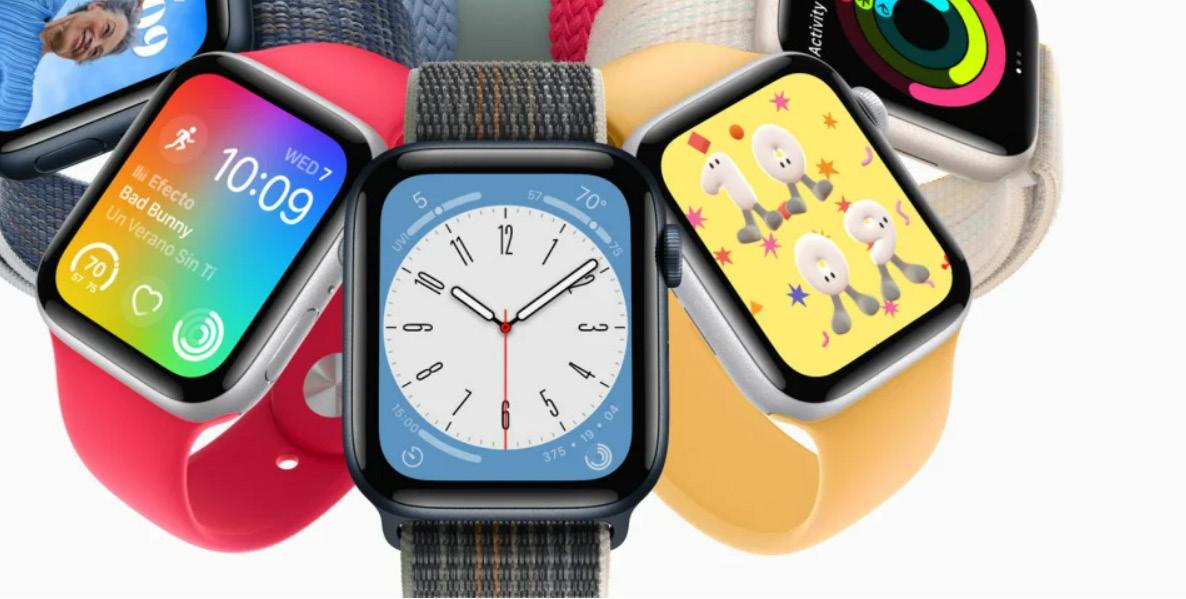
Oura Ring: Starting at $300
Fitbit: Prices, models and options range from $70-$300
Page 20 • IN GOOD HEALTH – Mohawk Valley’s Healthcare Newspaper • February 2023





















 By David Podos
By David Podos






















 By Barbara Pierce
By Barbara Pierce


















 By Jim Miller
By Jim Miller















